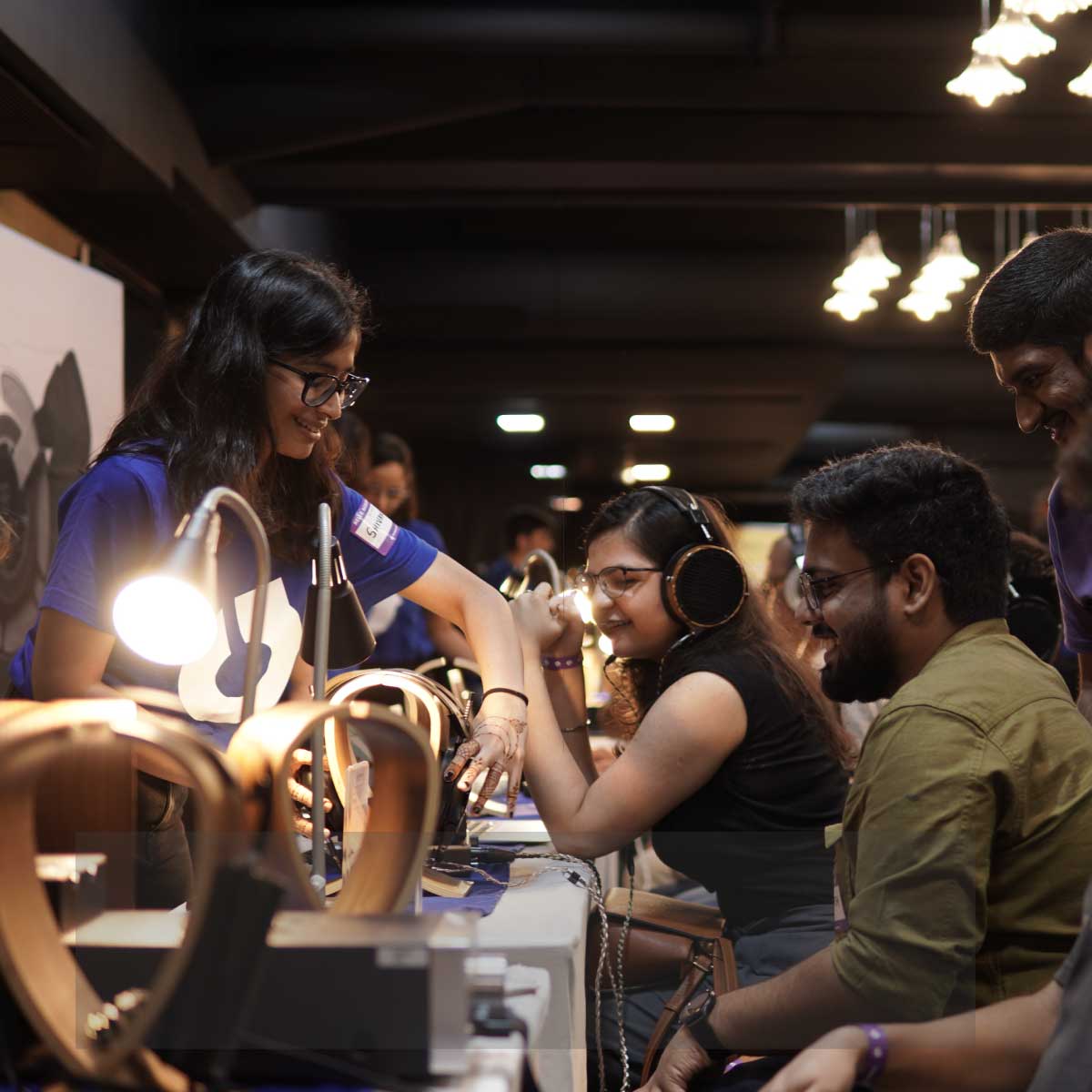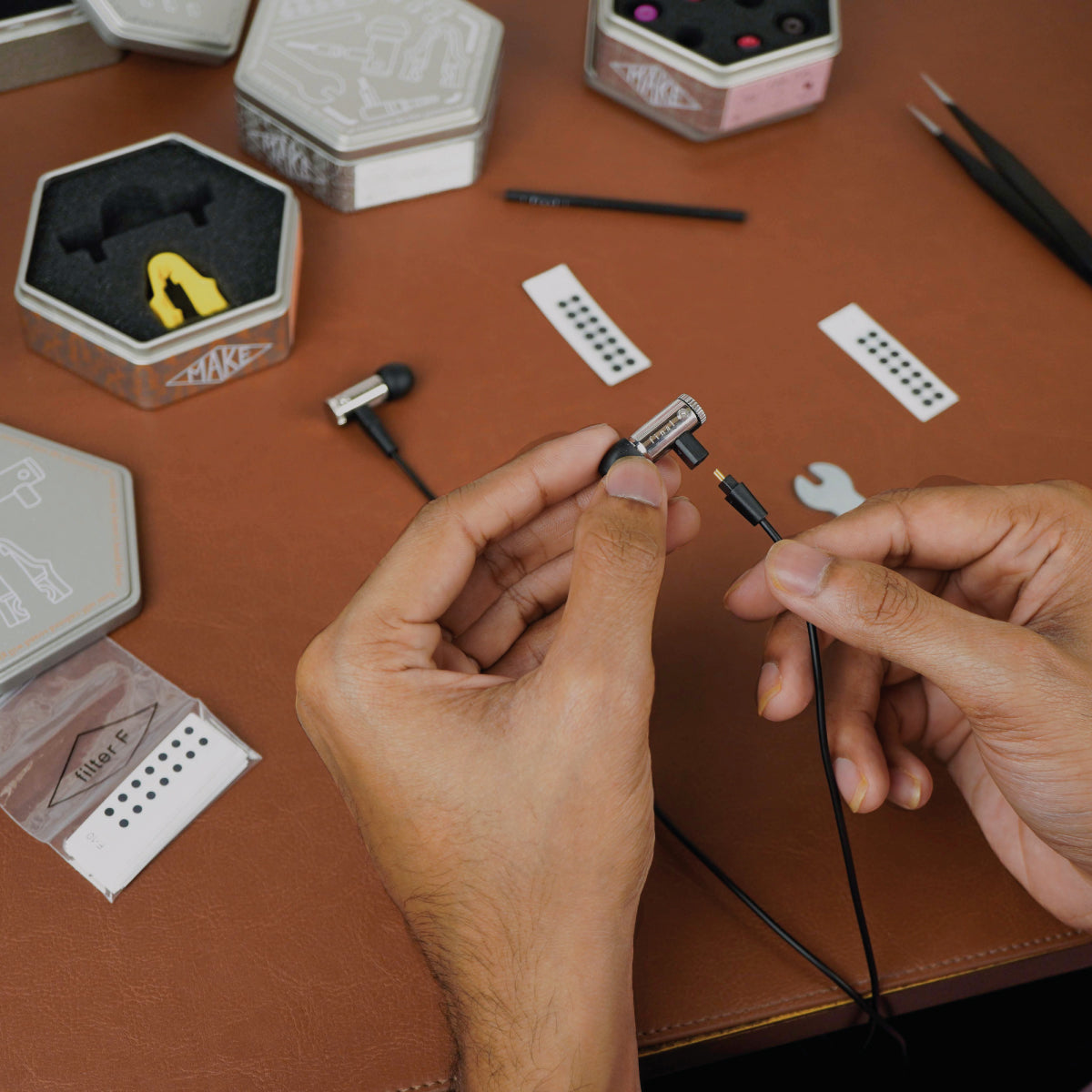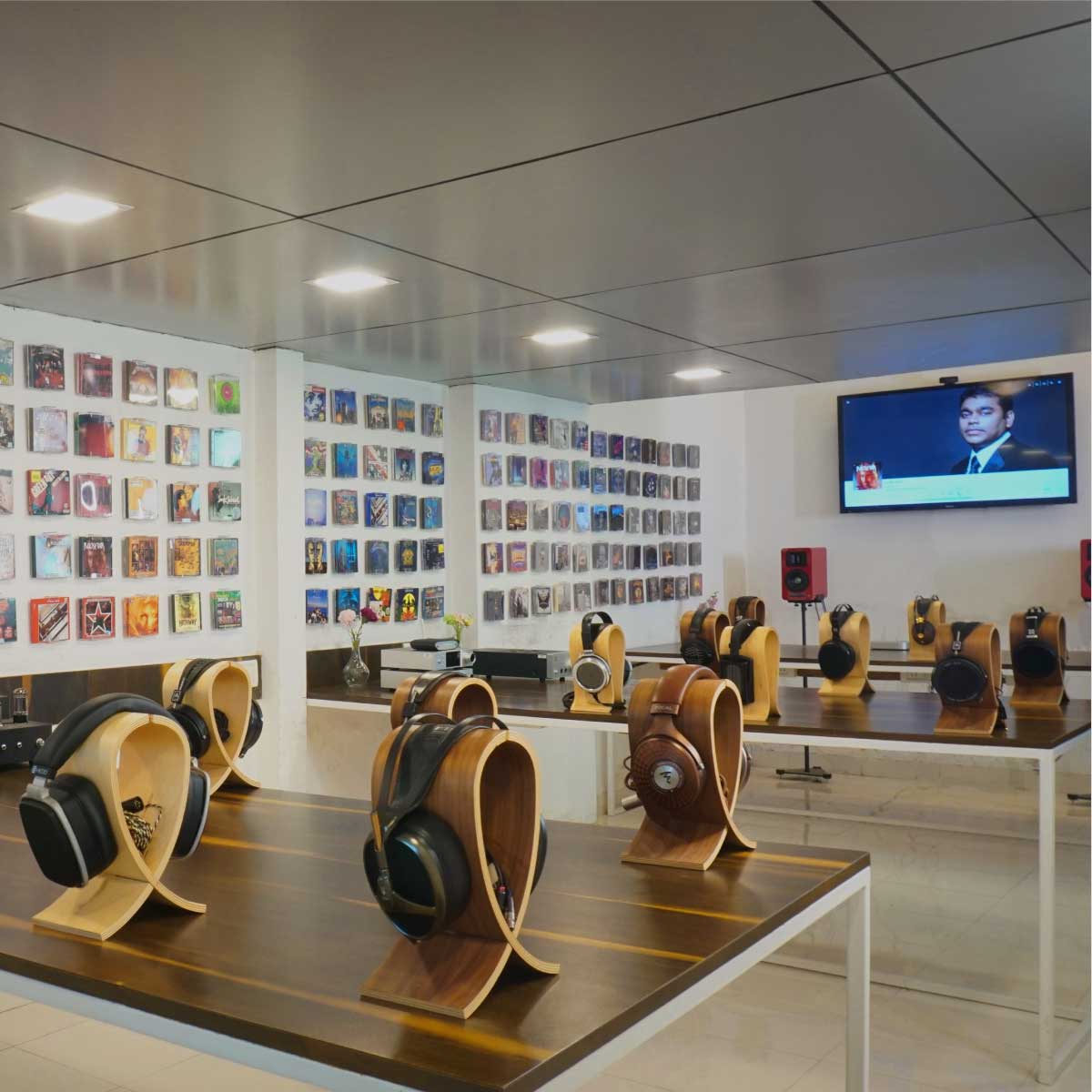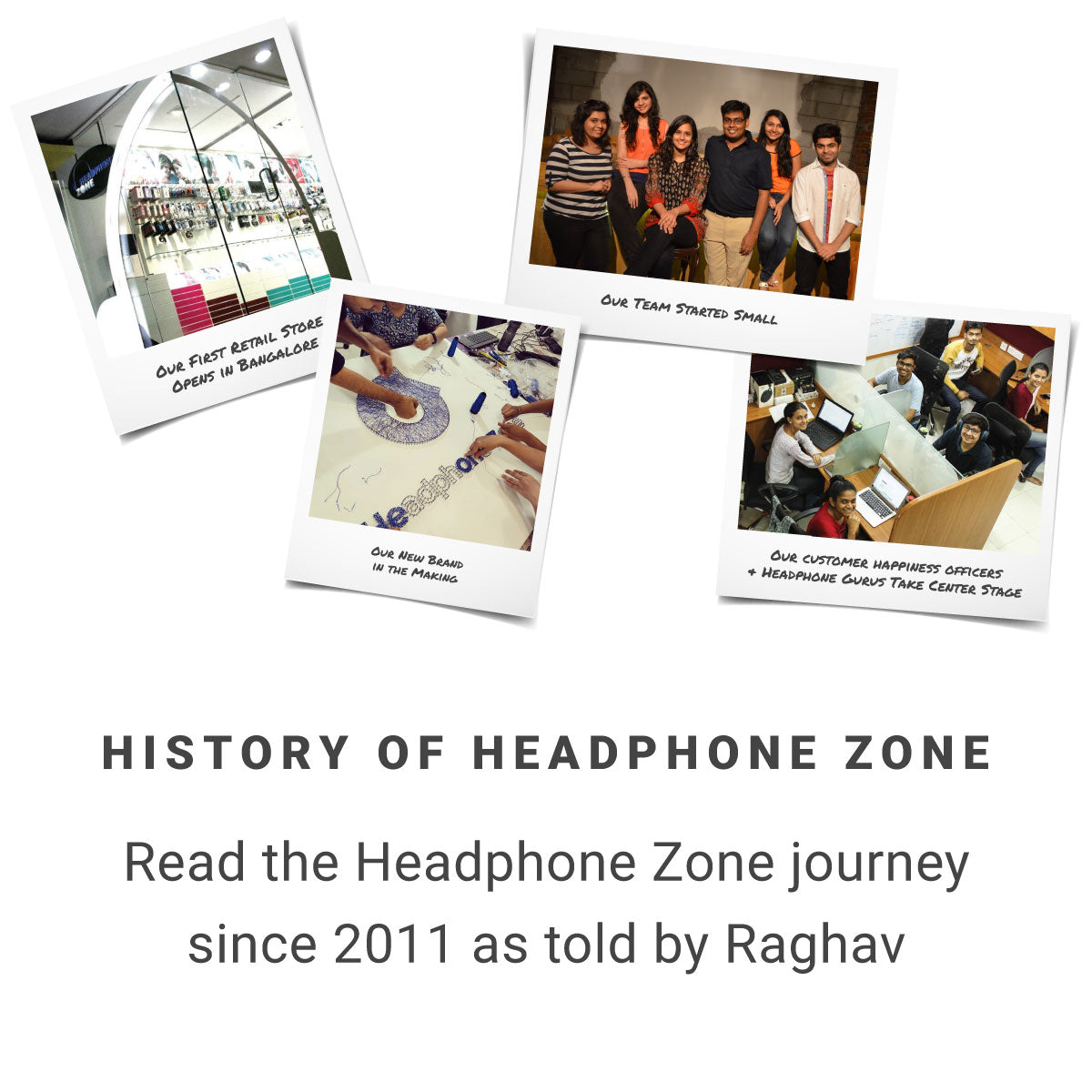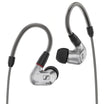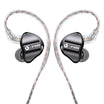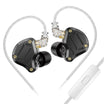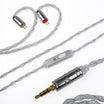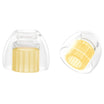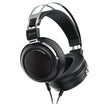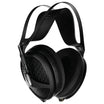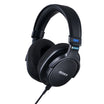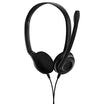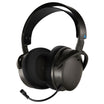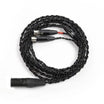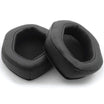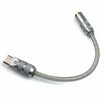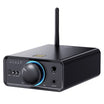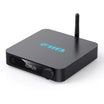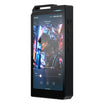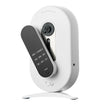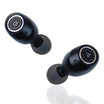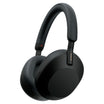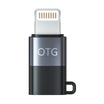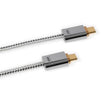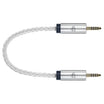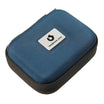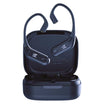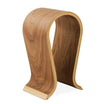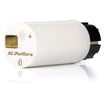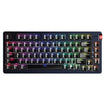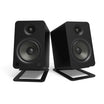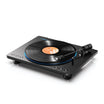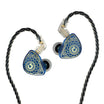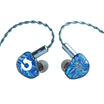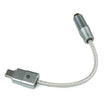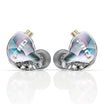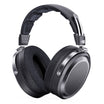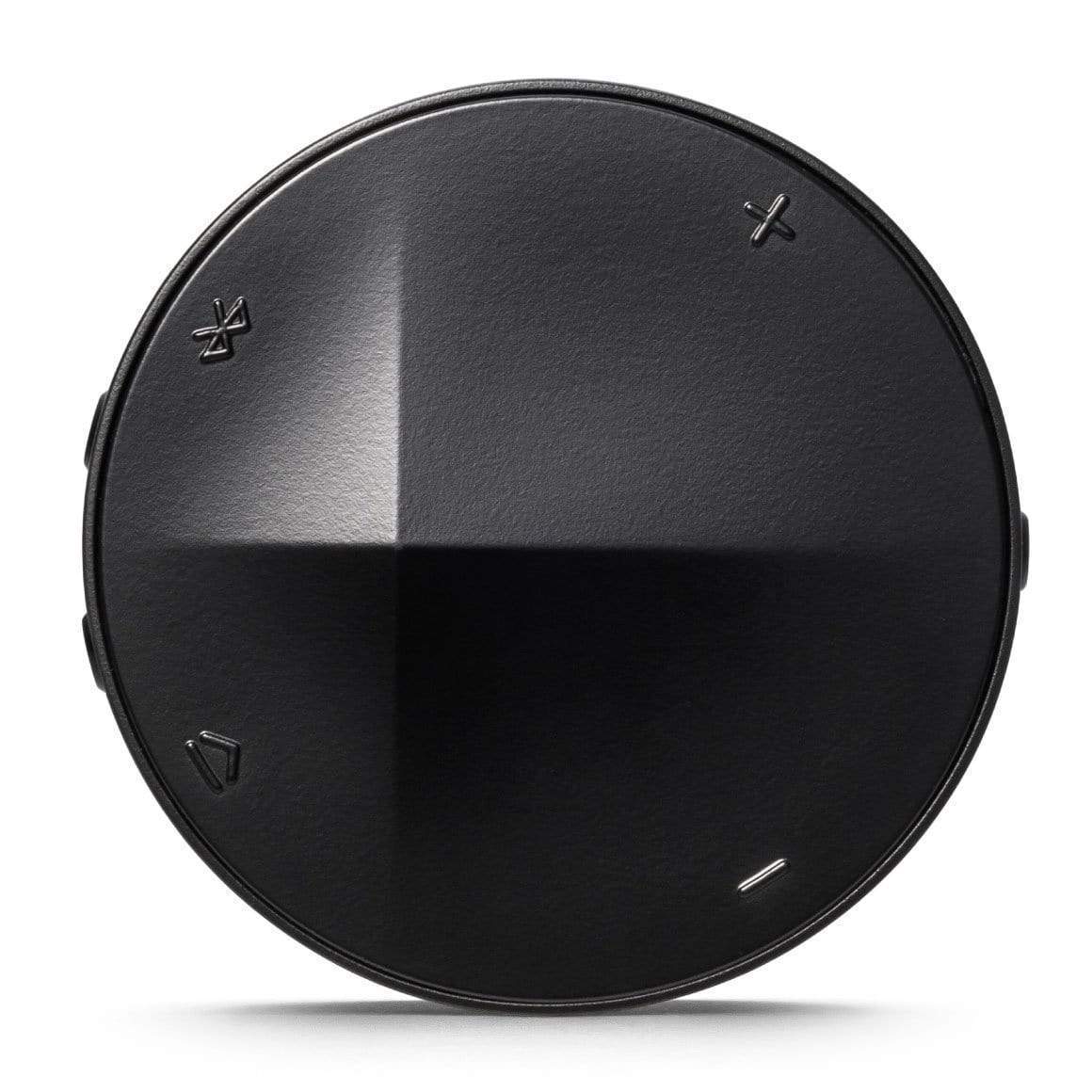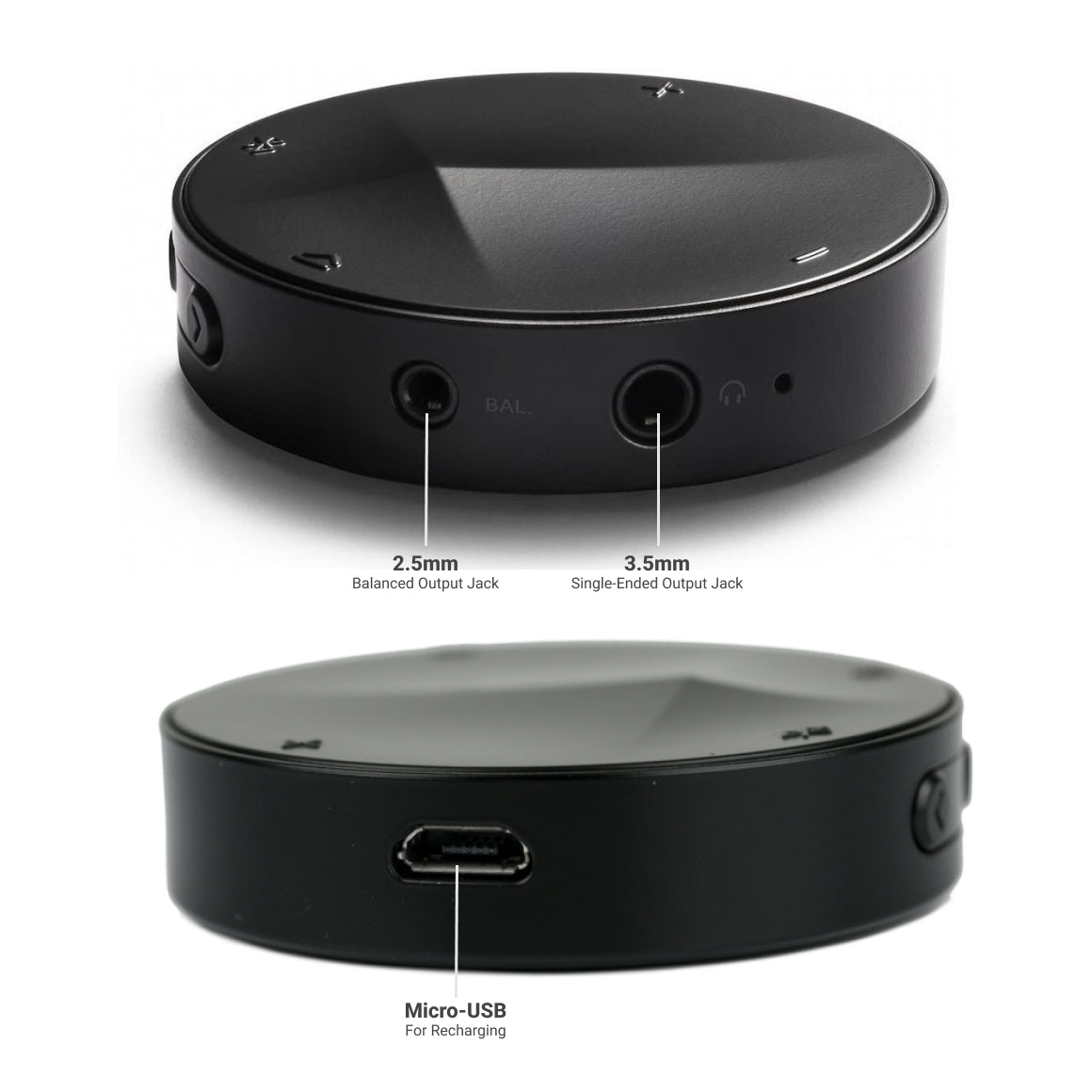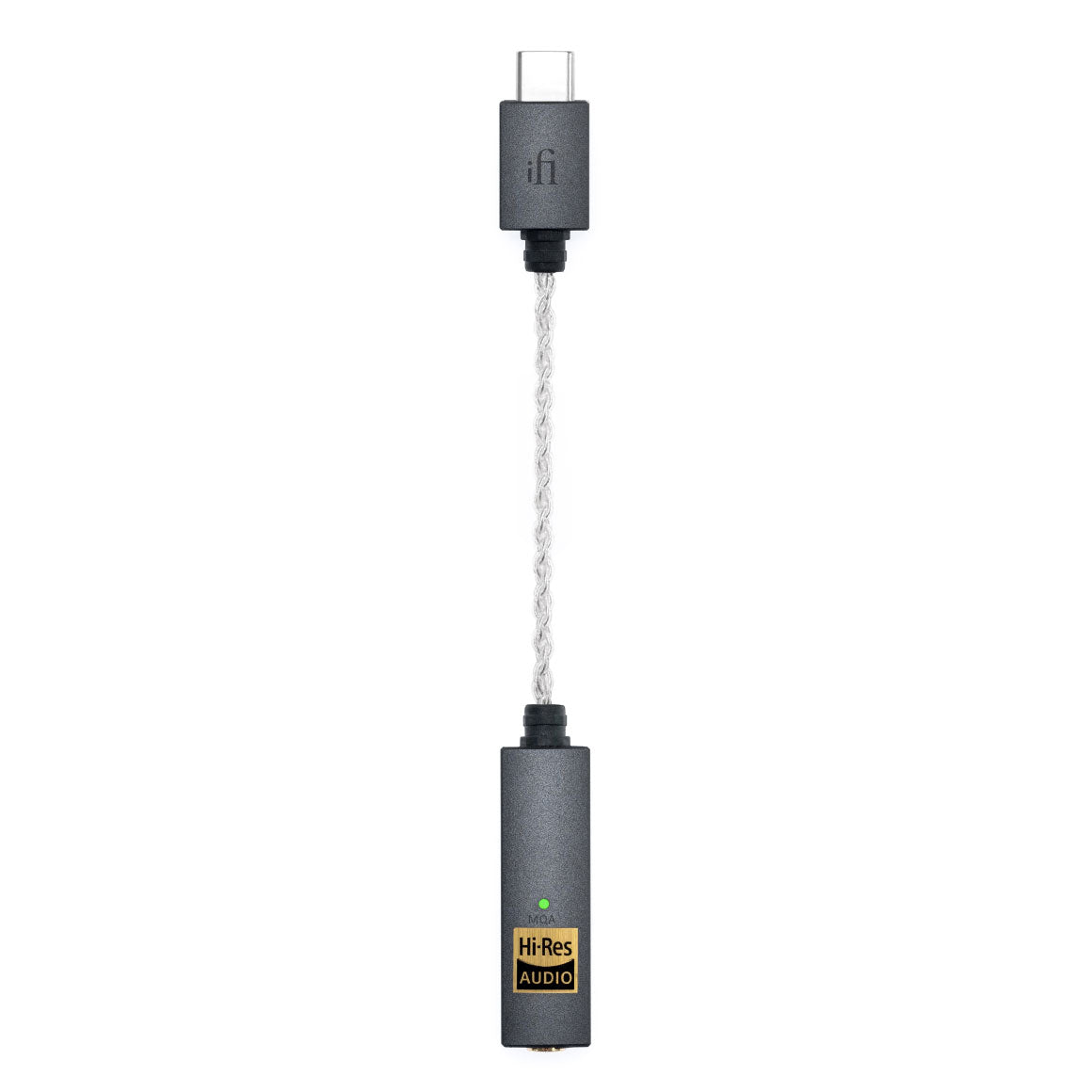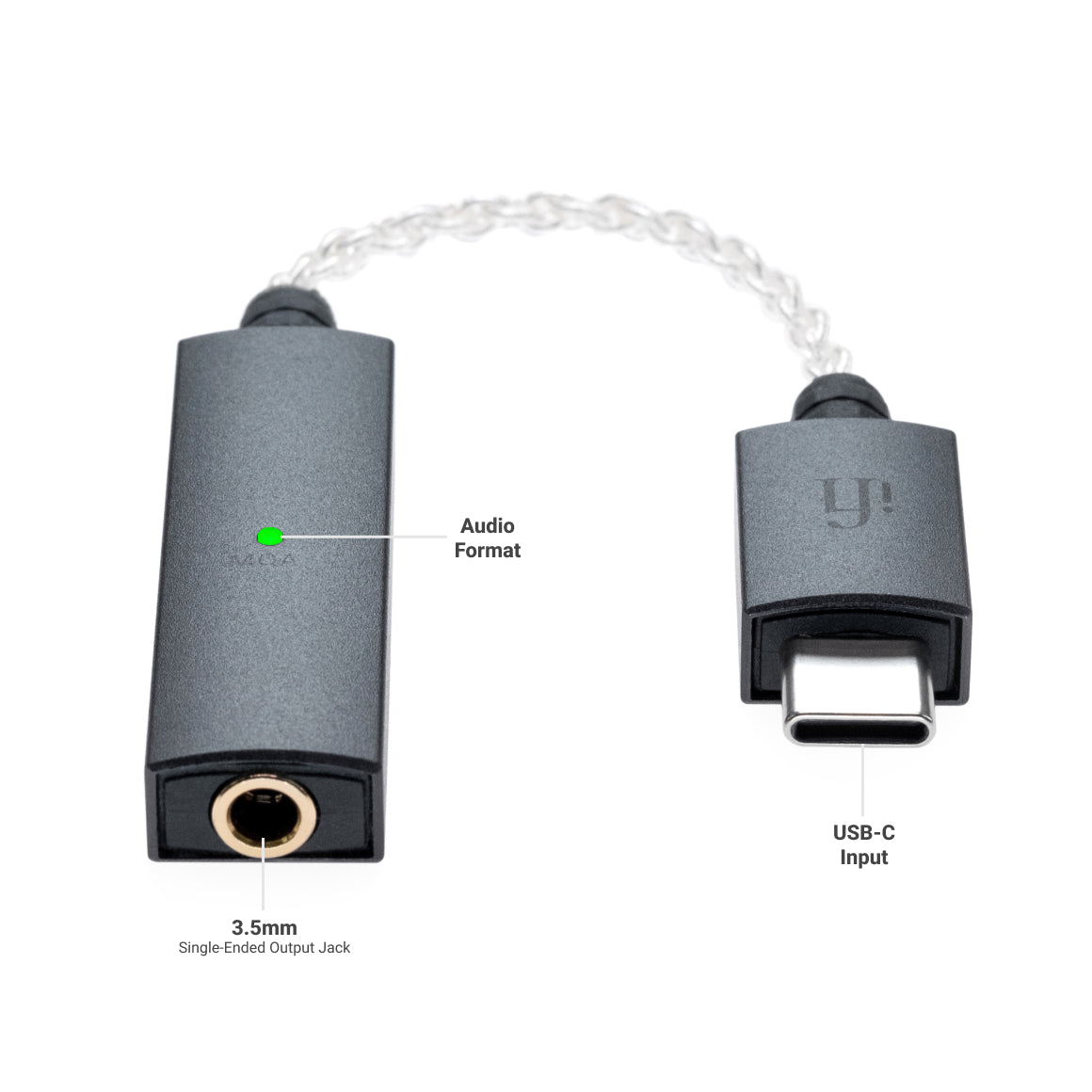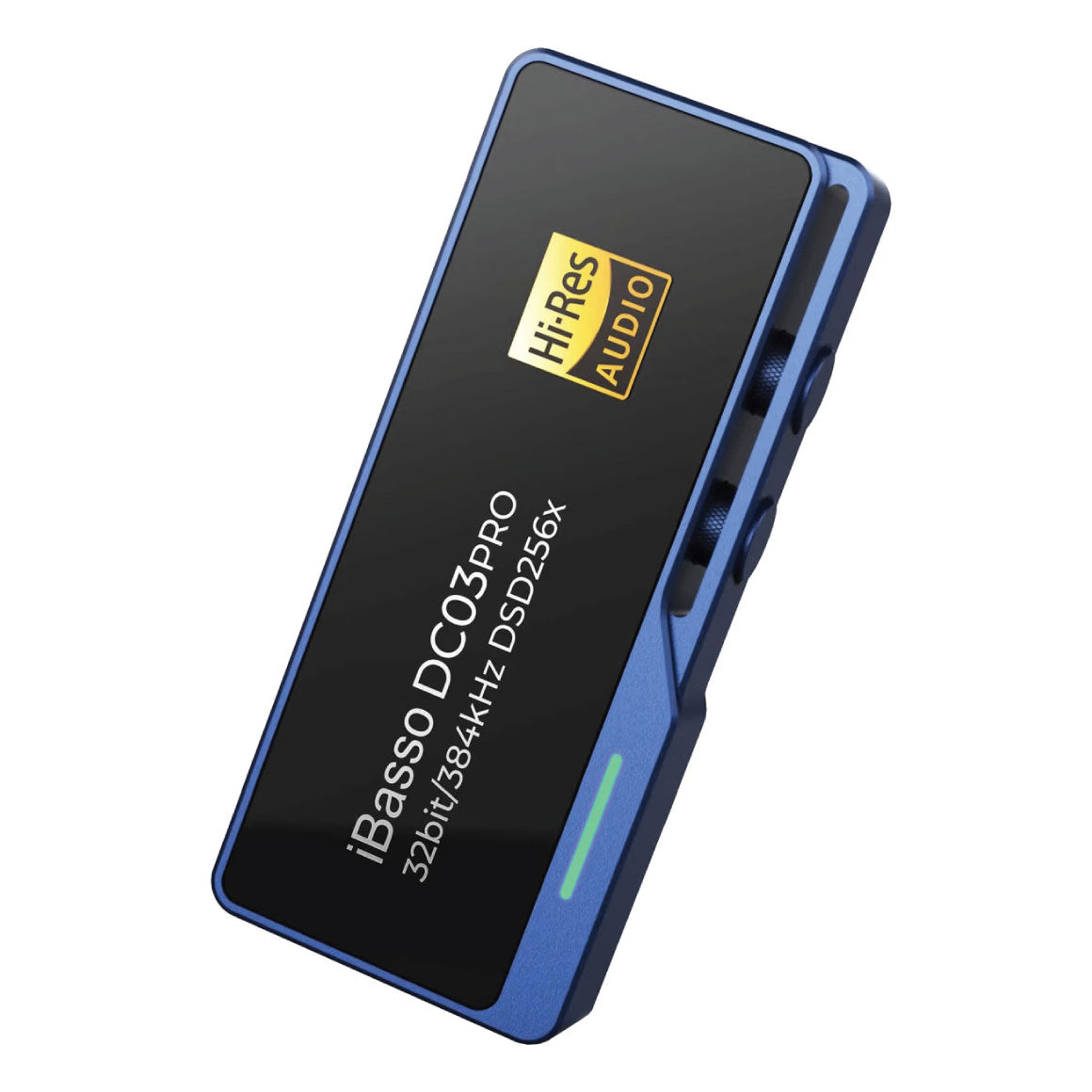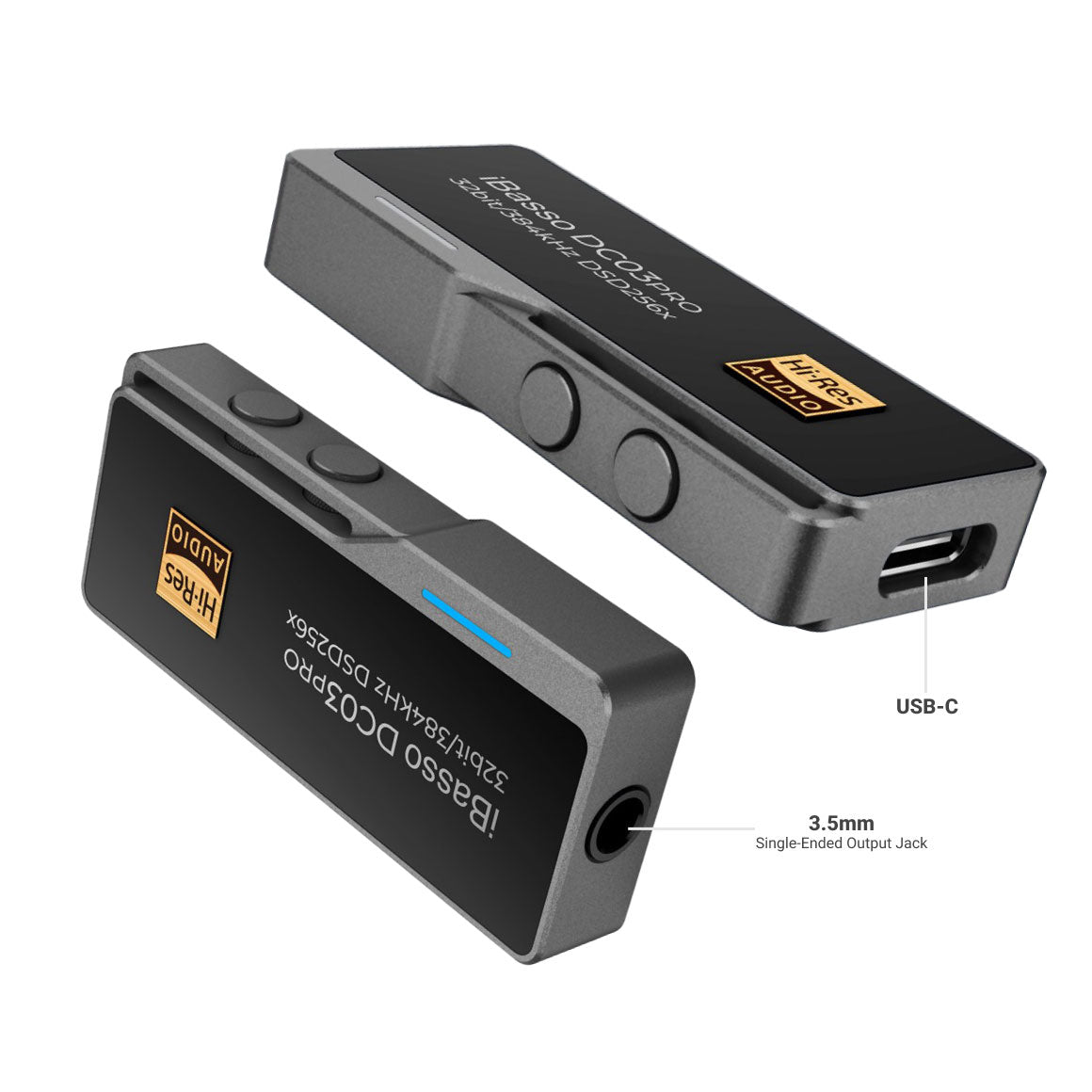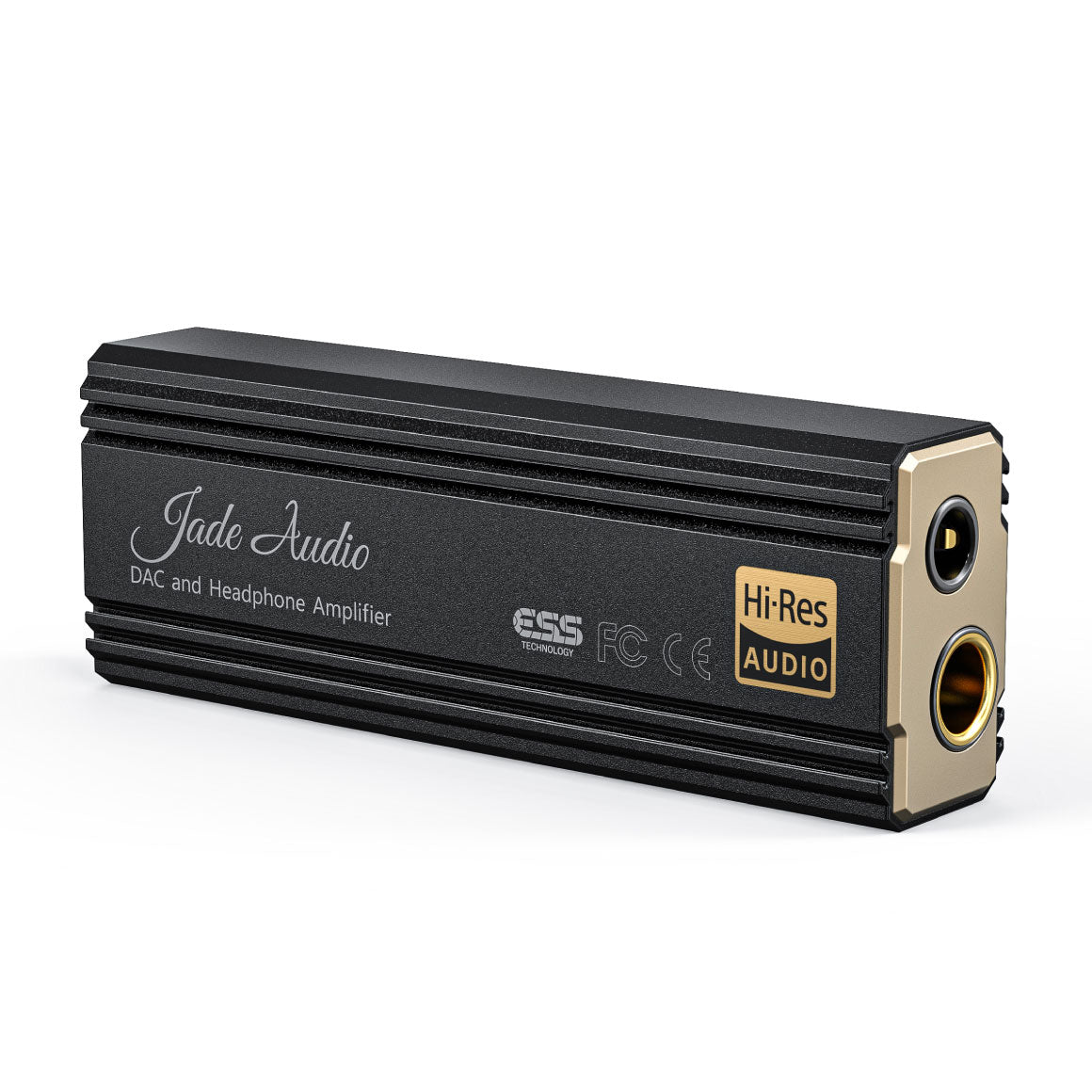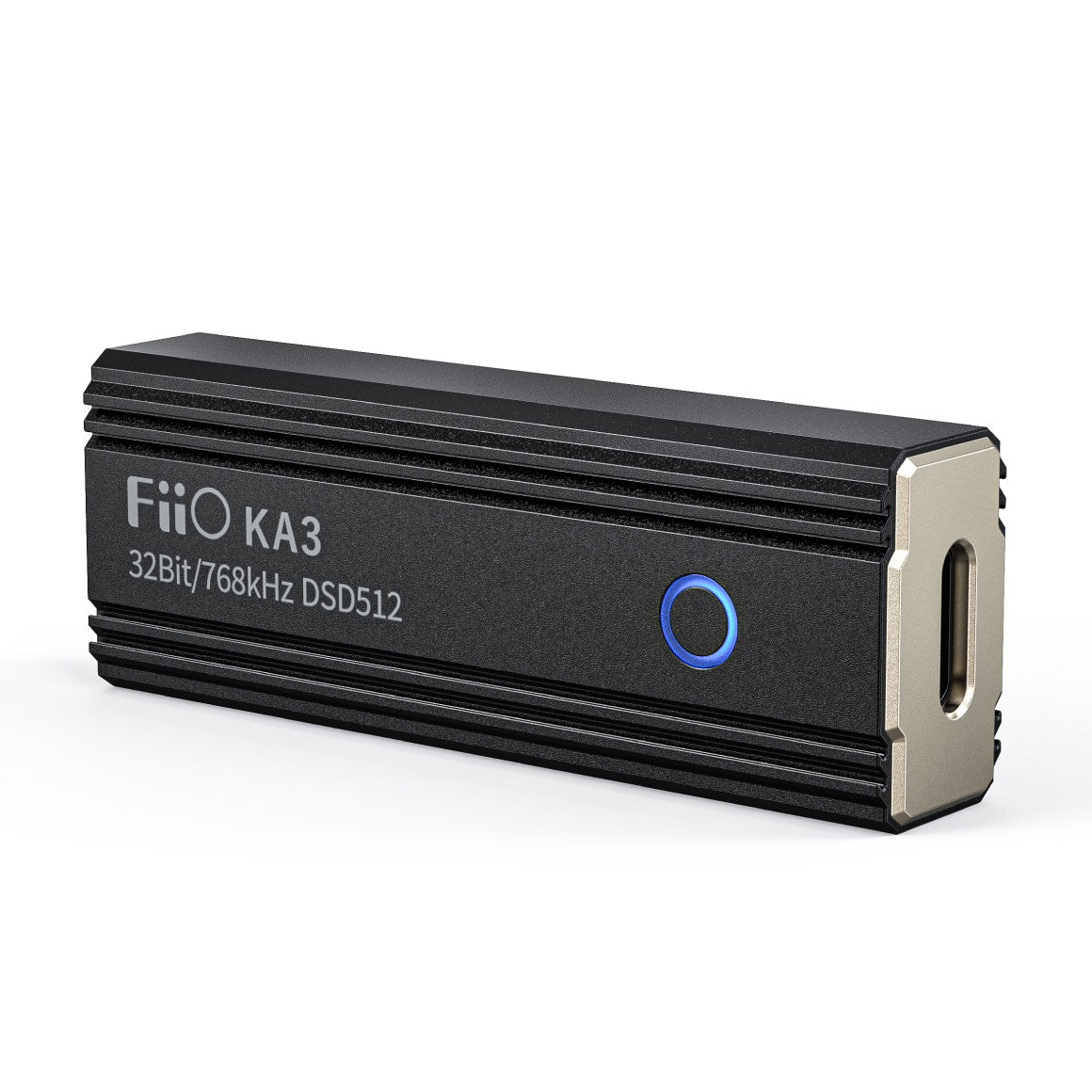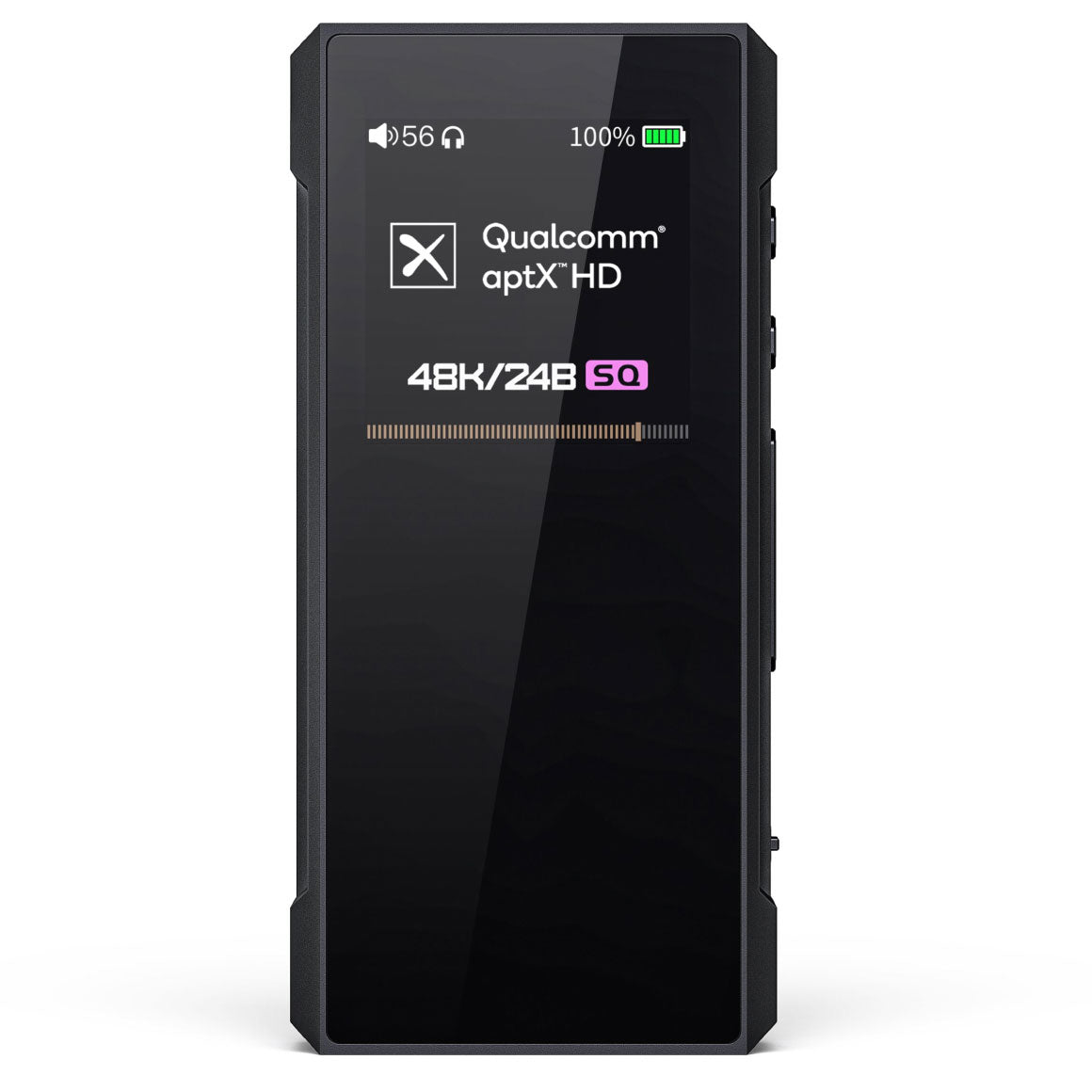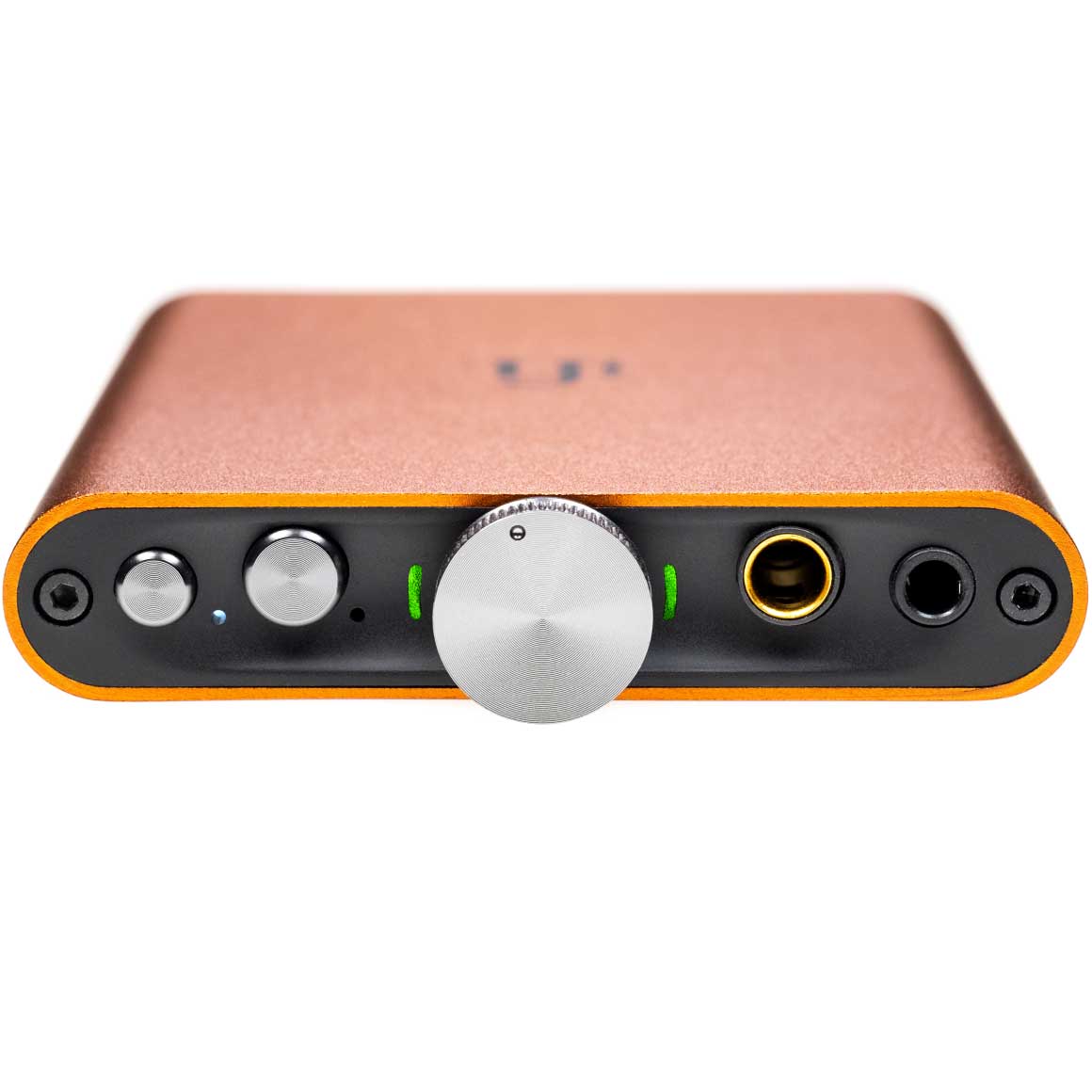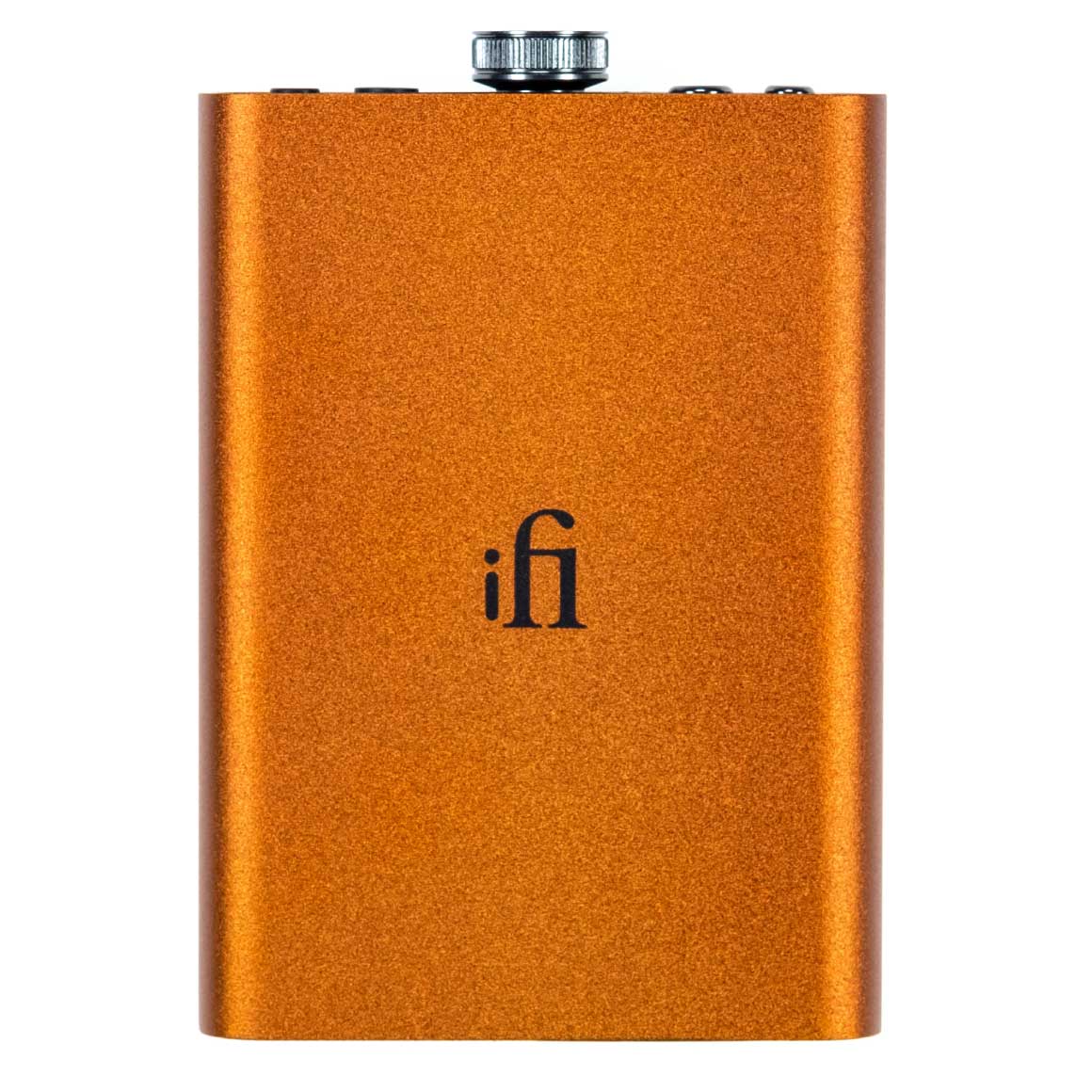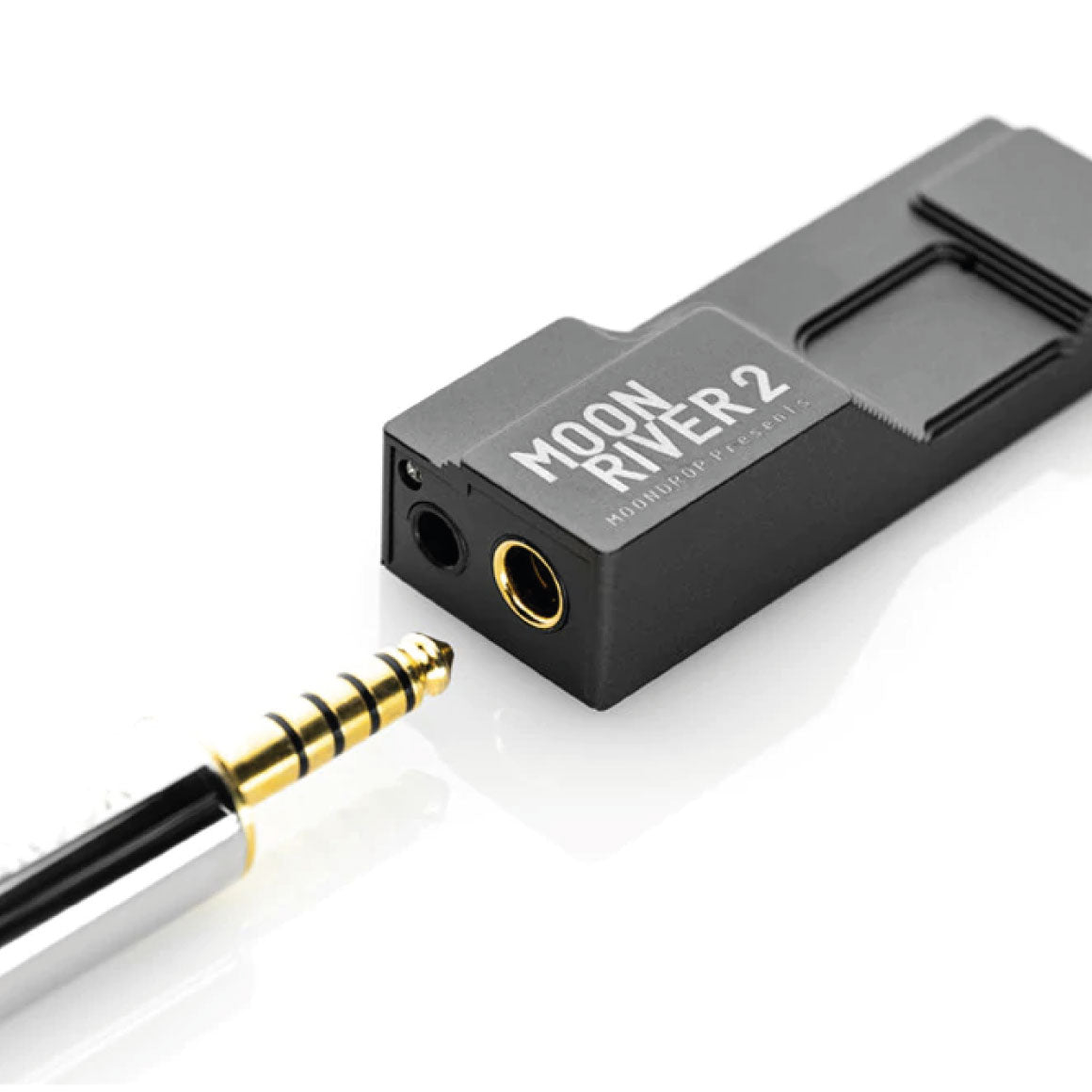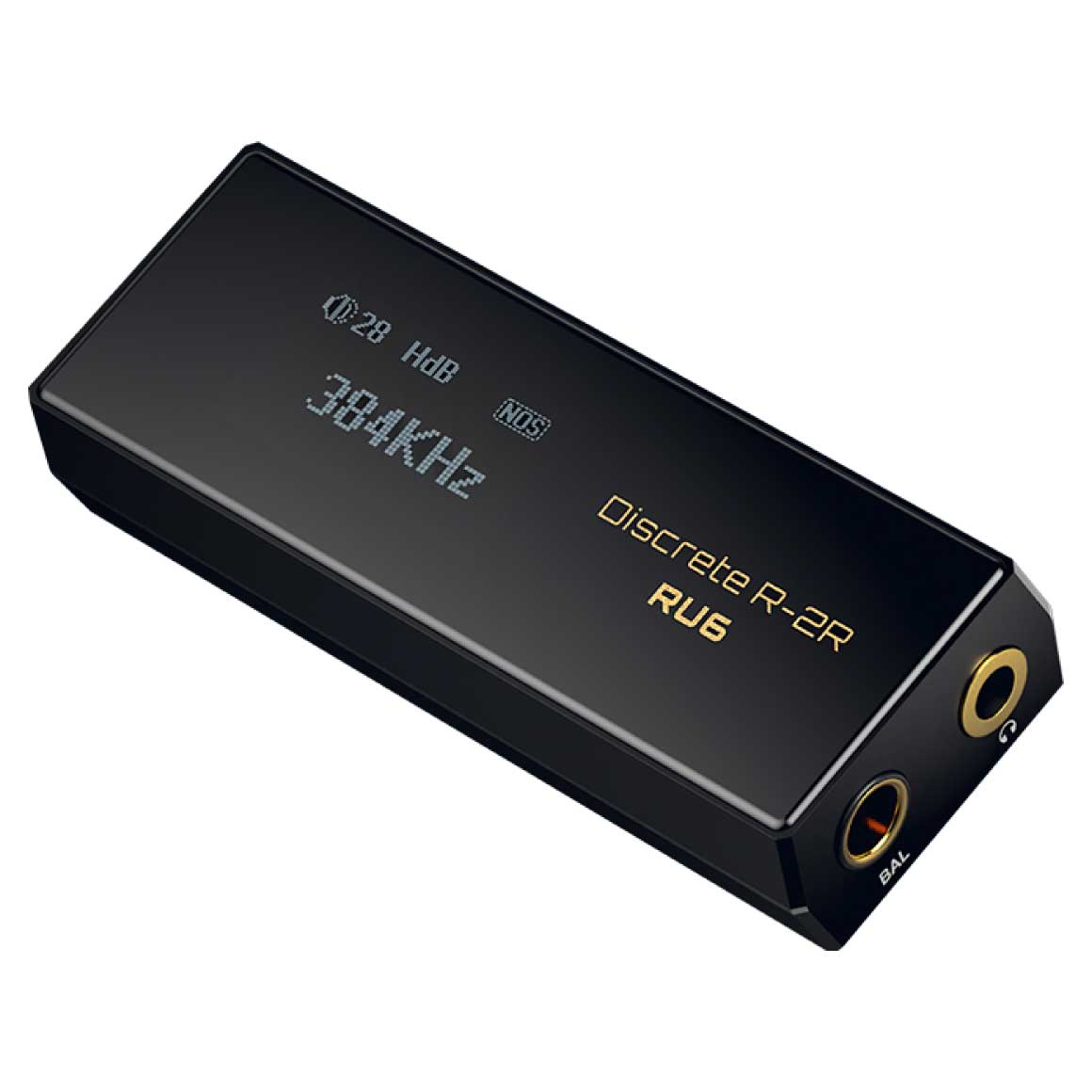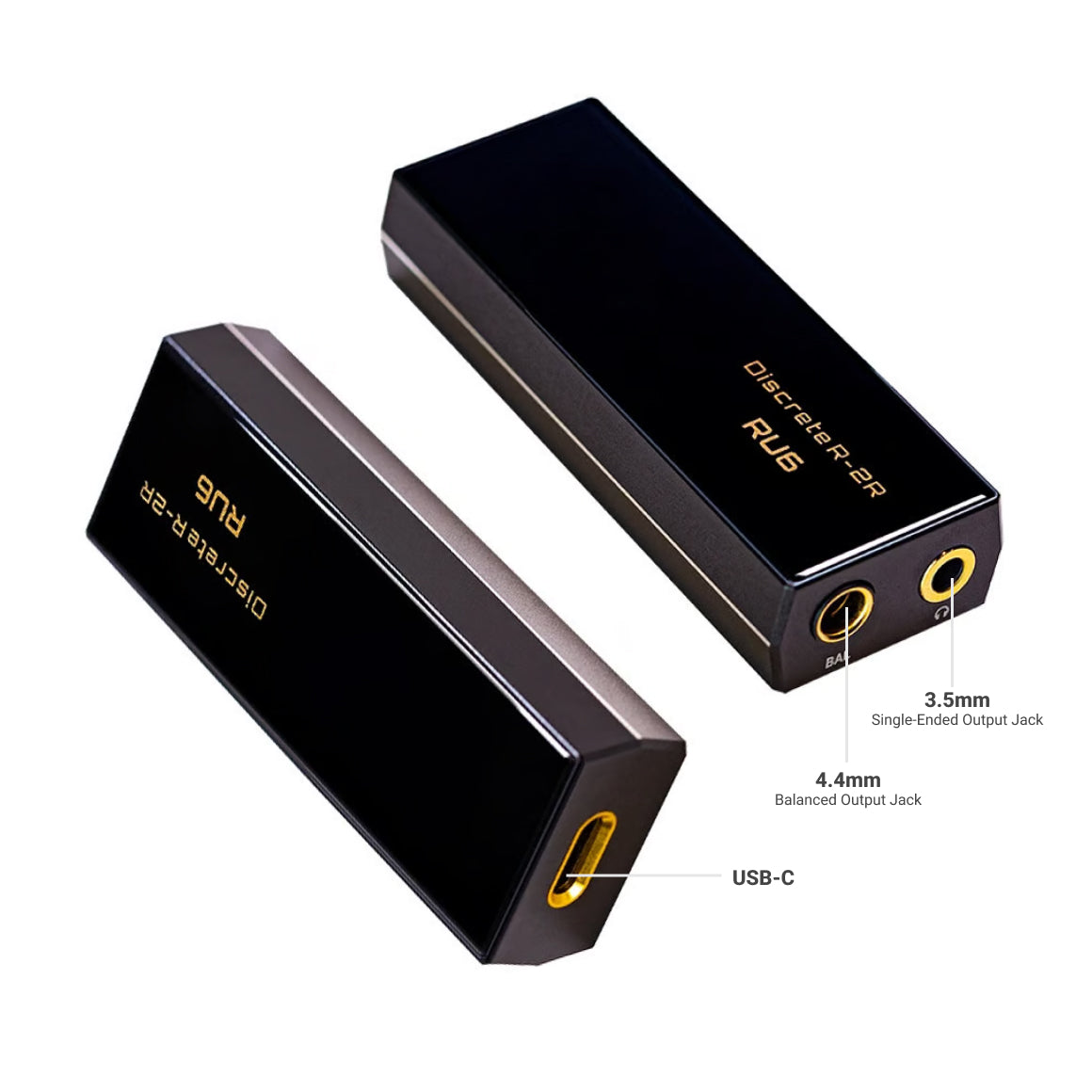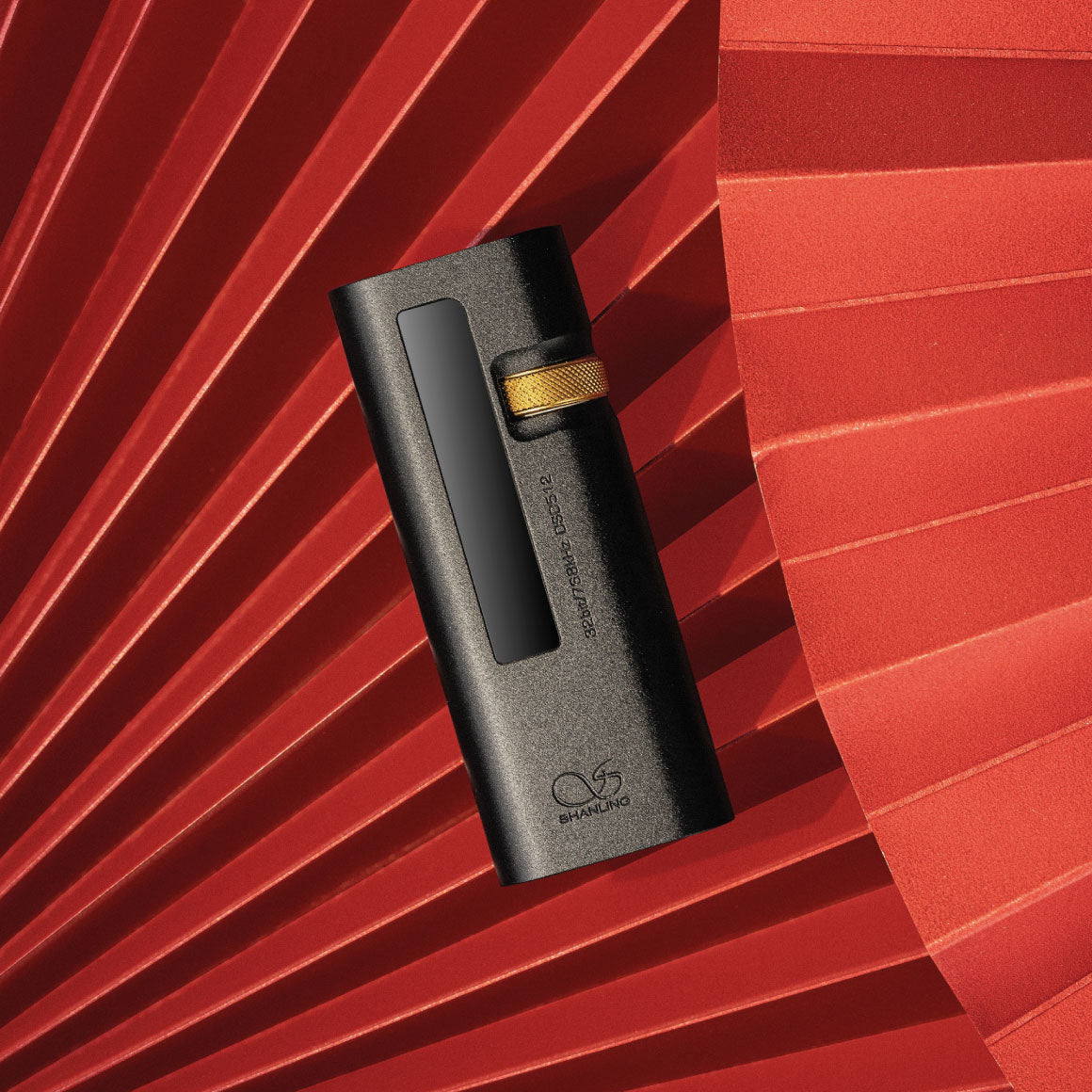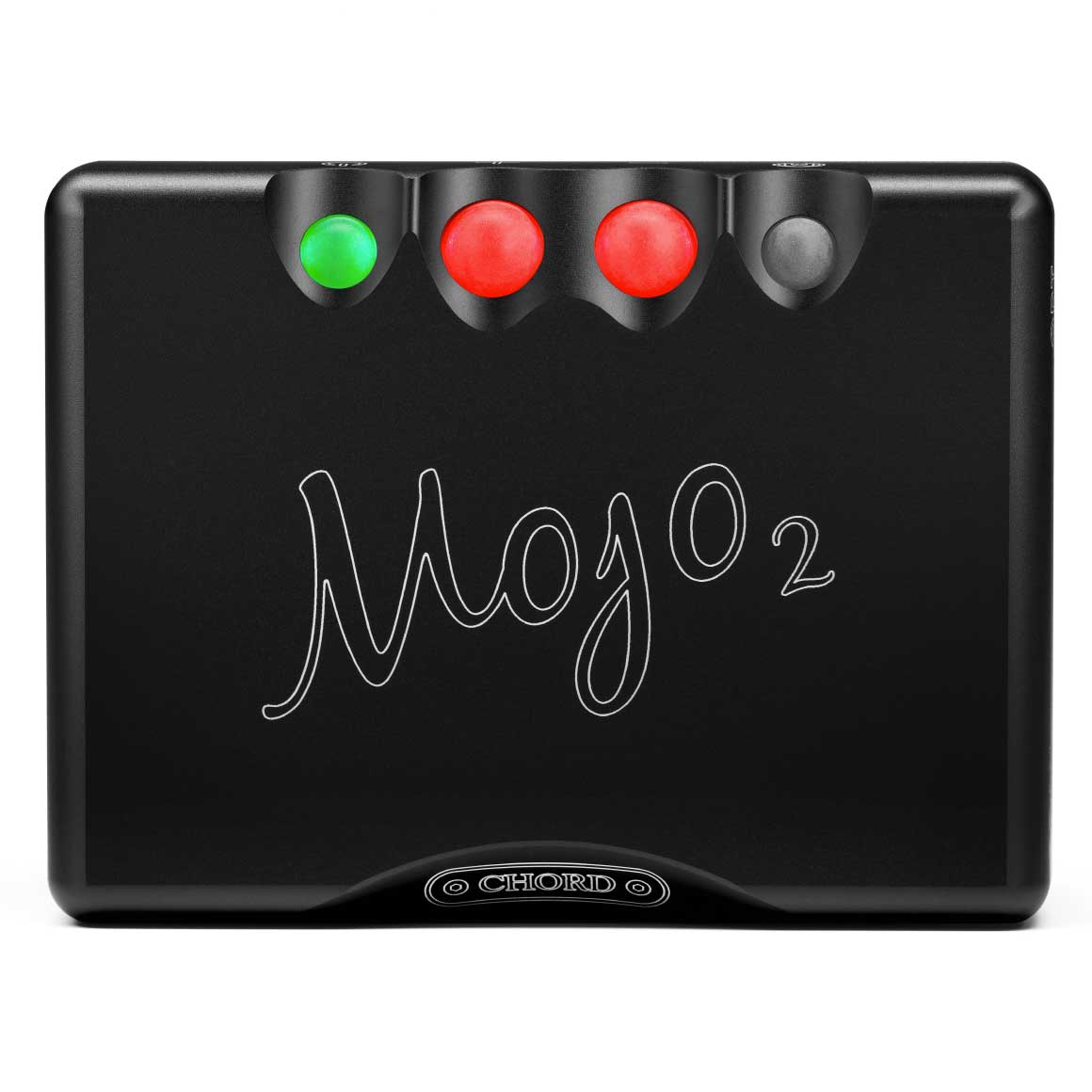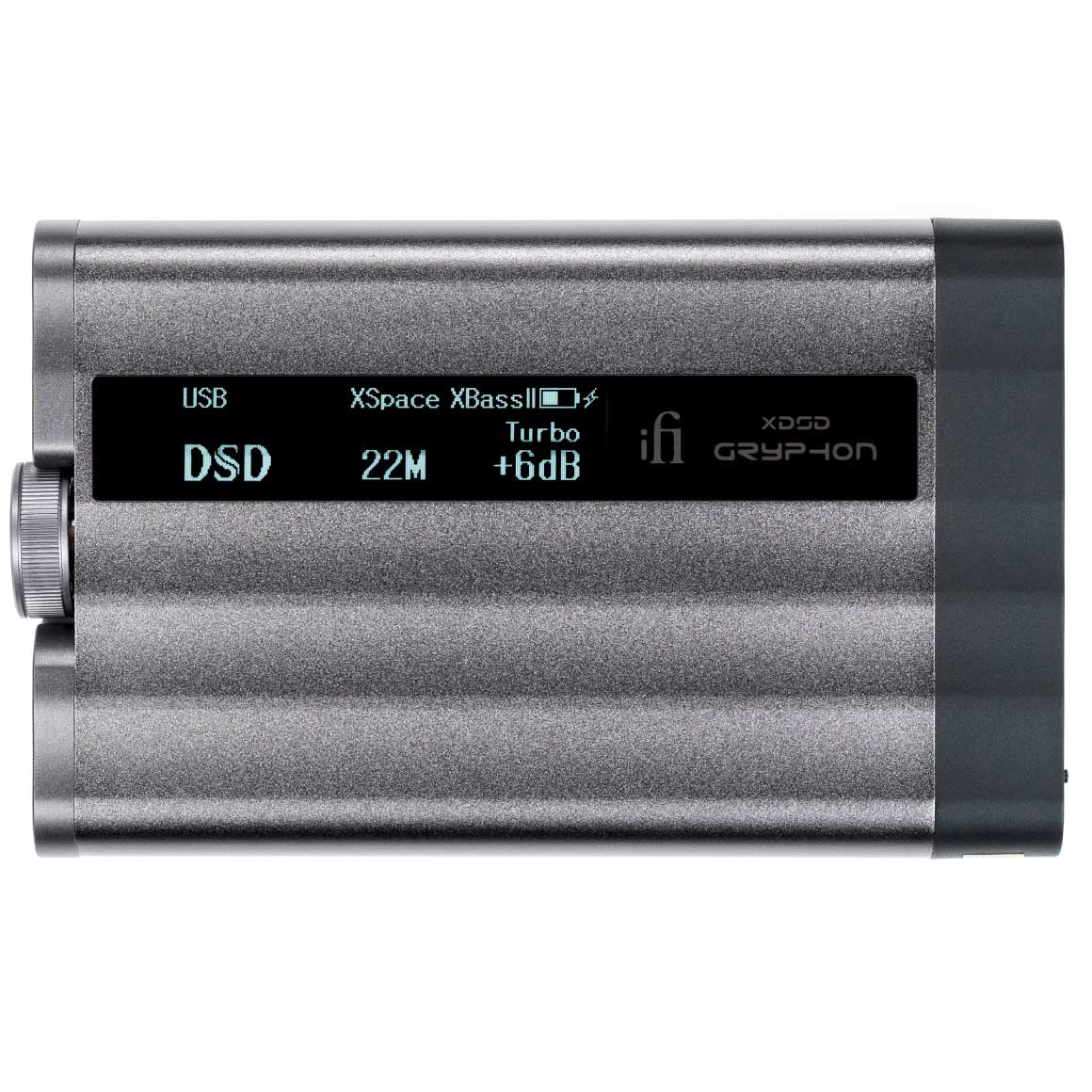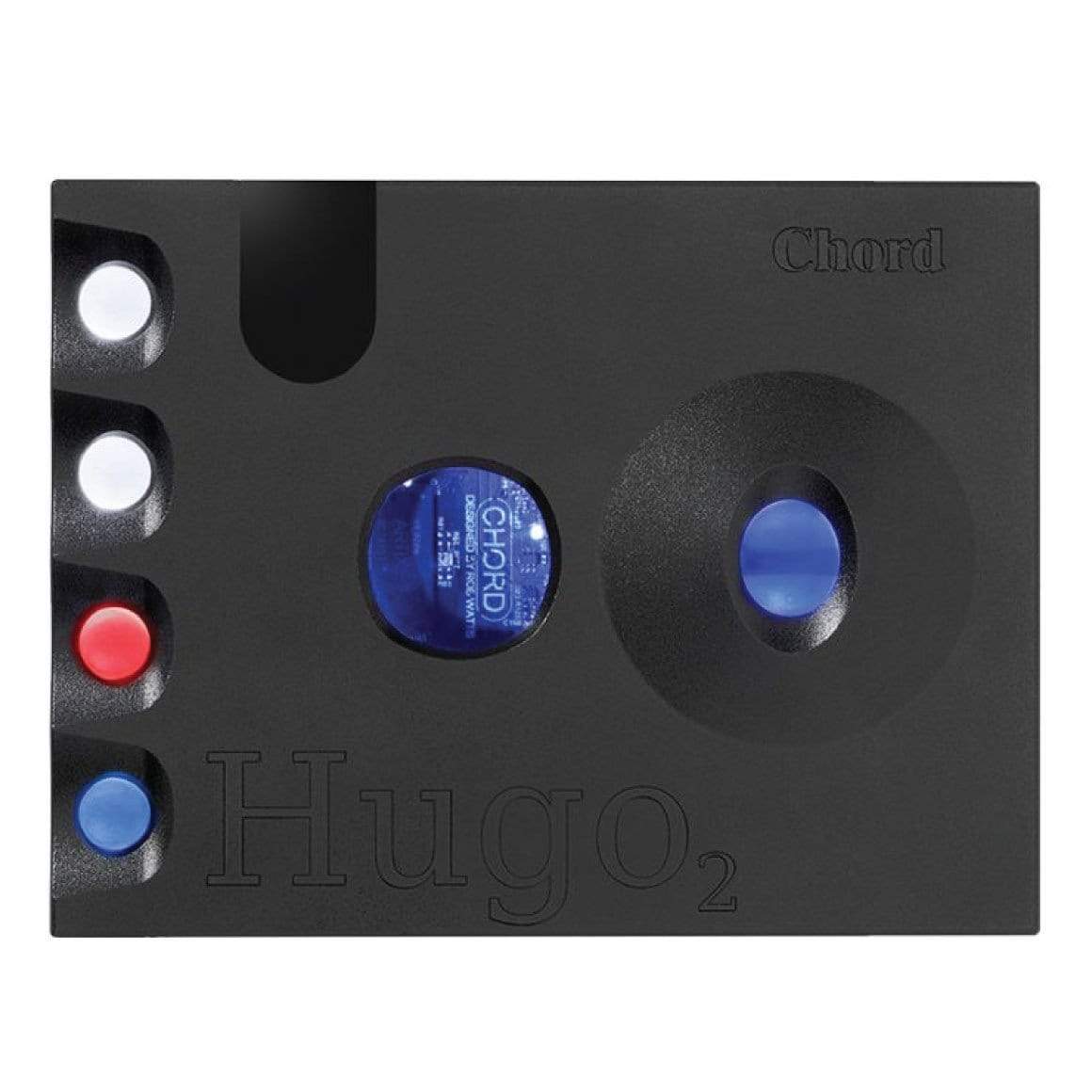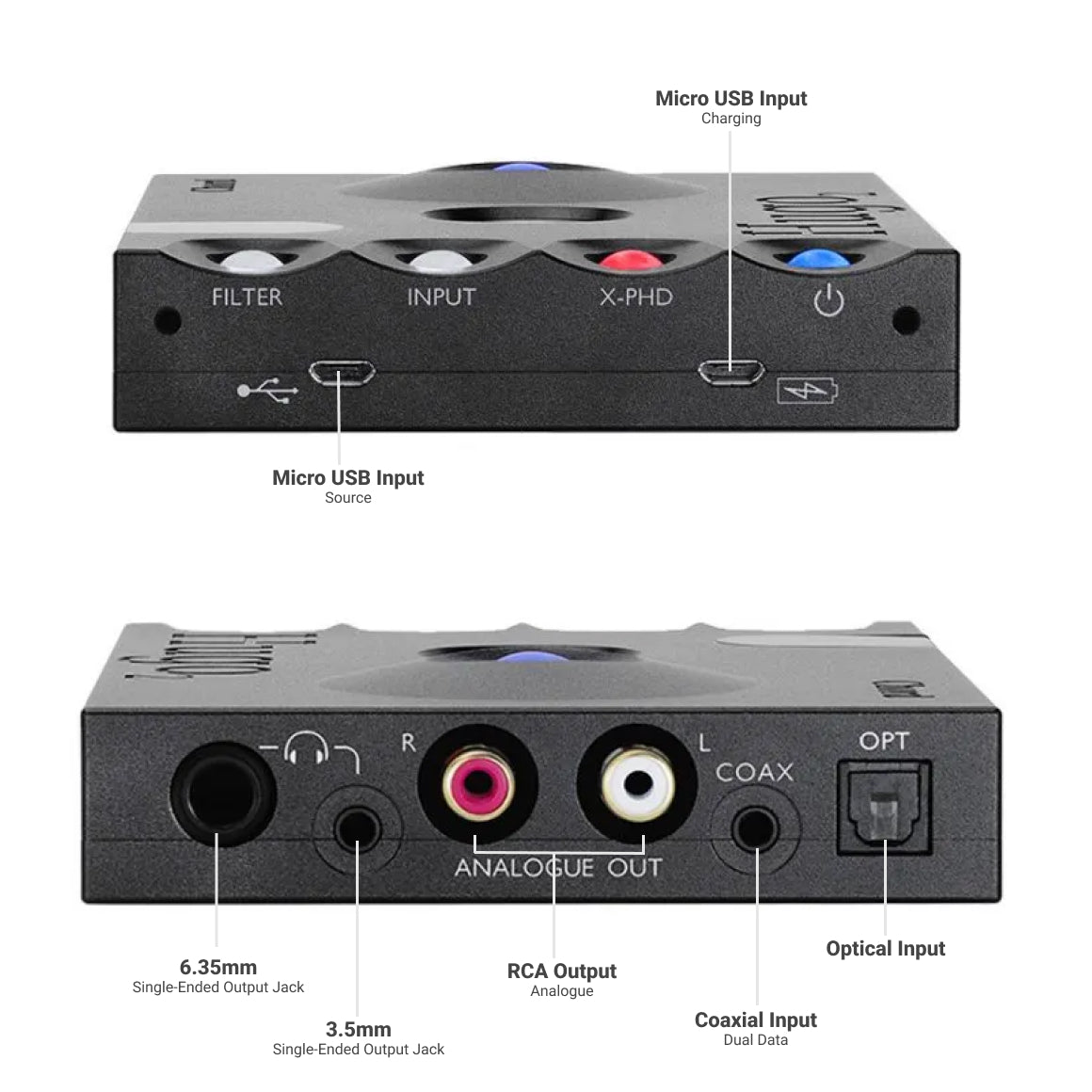Buying Guide
The Best Portable DACs At Every Price Point
Get your hands on some of the finest portable DAC & Amps that are Curated by Raghav. This list includes DACs at every price point. This video will help you understand the basics of DAC and the difference between Single-ended and Balanced connections. This video will undoubtedly assist you in taking that step ahead if you want to advance in the realm of music.
Featured in this Blog
-
Ideal for Beginners
Lost in the Audio Maze? Let Us Guide Your Beginner Audiophile Journey!
If you are a newcomer in the audio world, this headphone or gear is a stepping stone for those overwhelmed by the plethora of options available.
If you see a product marked with “🌱 Ideal for Beginners," it indicates that this device is perfect for starting your audiophile journey.
-
Balanced Output
Upgrading from single-ended to balanced can be the easiest way to improve your sound.
This DAC, Amp or Hi-Res player offers a balanced output, ensuring pristine audio quality with minimised interference and enhanced clarity for your listening pleasure.
If you see a product marked as "⚖️ Balanced Output”, get ready for a symphony of crystal-clear tunes, free from any unwanted noise drama!
-
Use Wirelessly with Bluetooth
Enjoy the convenience of seamless wireless connectivity
This headphone or gear indicates that the product supports wireless connectivity via Bluetooth, freeing you from the tangles of cords and cables.
If you see products marked as “✂️ Use Wirelessly with Bluetooth”, enjoy the freedom to stream music, make calls, and more, all without being tethered to your device, giving you the flexibility to move around and multitask with ease.
-
Battery Life
No need to be connected to the power socket with these devices.
This headphone or gear promises long-lasting battery performance, ensuring your device keeps up with your adventures without missing a beat.
If you see products marked as “⏳ Battery Life”, be rest assured that you'll enjoy extended usage time, whether it's for uninterrupted music playback, extended gaming sessions, or all-day productivity, keeping you powered up throughout your day.
-
DAC Chip
Know the secret to your pristine audio.
This headphone or gear reveals the secret sauce behind superior audio quality, highlighting the presence of a high-performance DAC chip for pristine sound reproduction.
If you see products marked as “⚙️ DAC Chip”, expect to experience your music with unparalleled clarity, detail, and fidelity, ensuring that every note and nuance is faithfully reproduced for your listening pleasure.
-
Power Output
When you need that juice to get the best out of your products.
This headphone or gear packs a punch, revealing the product's impressive power output capabilities, ensuring it can handle even the most demanding products with ease.
If you see products marked as “🚀 Power Output”, you're in for a treat with robust performance for driving high-fidelity products without breaking a sweat.
-
Value for Money
Great sound always doesn't have to come with a fancy price tag.
Every once in a while we come across a product that give you a lot more value for the price.
If you see products marked as "🥜 Value For Money" you can be sure you're getting a great bang for your buck.
-
Ideal for Beginners
Lost in the Audio Maze? Let Us Guide Your Beginner Audiophile Journey!
If you are a newcomer in the audio world, this headphone or gear is a stepping stone for those overwhelmed by the plethora of options available.
If you see a product marked with “🌱 Ideal for Beginners," it indicates that this device is perfect for starting your audiophile journey.
-
Incredibly Popular
Some things deserve all the attention.
This headphone or gear is a crowd favourite, winning over fans everywhere with its undeniable audio quality.
If you see products marked as “🥇 Incredibly Popular”, you’re opting for a tried-and-true choice that’s loved by many, ensuring you're getting something that’s proven to be awesome and widely acclaimed.
-
Works Great with Type-C
Don’t have a 3.5mm headphone jack on your phone? Don’t worry we got you covered.
This headphone or gear is fully compatible with Type-C USB connectors. Not only do they seamlessly connect to your device without needing an additonal dongle or adapter and ensures optimal performance without any hassle.
If you see a product marked as “📱 Works Great with Type-C”, you can be confident that you'll experience seamless connectivity with a universal connection standard that simplifies your audio setup.
-
DAC Chip
Know the secret to your pristine audio.
This headphone or gear reveals the secret sauce behind superior audio quality, highlighting the presence of a high-performance DAC chip for pristine sound reproduction.
If you see products marked as “⚙️ DAC Chip”, expect to experience your music with unparalleled clarity, detail, and fidelity, ensuring that every note and nuance is faithfully reproduced for your listening pleasure.
-
Power Output
When you need that juice to get the best out of your products.
This headphone or gear packs a punch, revealing the product's impressive power output capabilities, ensuring it can handle even the most demanding products with ease.
If you see products marked as “🚀 Power Output”, you're in for a treat with robust performance for driving high-fidelity products without breaking a sweat.
-
Value for Money
Great sound always doesn't have to come with a fancy price tag.
Every once in a while we come across a product that give you a lot more value for the price.
If you see products marked as "🥜 Value For Money" you can be sure you're getting a great bang for your buck.
-
Ideal for Beginners
Lost in the Audio Maze? Let Us Guide Your Beginner Audiophile Journey!
If you are a newcomer in the audio world, this headphone or gear is a stepping stone for those overwhelmed by the plethora of options available.
If you see a product marked with “🌱 Ideal for Beginners," it indicates that this device is perfect for starting your audiophile journey.
-
Works Great with Type-C
Don’t have a 3.5mm headphone jack on your phone? Don’t worry we got you covered.
This headphone or gear is fully compatible with Type-C USB connectors. Not only do they seamlessly connect to your device without needing an additonal dongle or adapter and ensures optimal performance without any hassle.
If you see a product marked as “📱 Works Great with Type-C”, you can be confident that you'll experience seamless connectivity with a universal connection standard that simplifies your audio setup.
-
DAC Chip
Know the secret to your pristine audio.
This headphone or gear reveals the secret sauce behind superior audio quality, highlighting the presence of a high-performance DAC chip for pristine sound reproduction.
If you see products marked as “⚙️ DAC Chip”, expect to experience your music with unparalleled clarity, detail, and fidelity, ensuring that every note and nuance is faithfully reproduced for your listening pleasure.
-
Power Output
When you need that juice to get the best out of your products.
This headphone or gear packs a punch, revealing the product's impressive power output capabilities, ensuring it can handle even the most demanding products with ease.
If you see products marked as “🚀 Power Output”, you're in for a treat with robust performance for driving high-fidelity products without breaking a sweat.
-
Premium Economy
Sensible spending and class above in quality.
This headphone or gear offers top-notch sound and performance without much impact on your pocket, promising a delightful experience that exceeds your expectations at an economical price point.
If you see a product marked as “💎 Premium Economy," it indicates that you're getting a high-quality audio product with exceptional sound clarity and reliable performance, all at a budget-friendly price.
-
Balanced Output
Upgrading from single-ended to balanced can be the easiest way to improve your sound.
This DAC, Amp or Hi-Res player offers a balanced output, ensuring pristine audio quality with minimised interference and enhanced clarity for your listening pleasure.
If you see a product marked as "⚖️ Balanced Output”, get ready for a symphony of crystal-clear tunes, free from any unwanted noise drama!
-
Use Wirelessly with Bluetooth
Enjoy the convenience of seamless wireless connectivity
This headphone or gear indicates that the product supports wireless connectivity via Bluetooth, freeing you from the tangles of cords and cables.
If you see products marked as “✂️ Use Wirelessly with Bluetooth”, enjoy the freedom to stream music, make calls, and more, all without being tethered to your device, giving you the flexibility to move around and multitask with ease.
-
Battery Life
No need to be connected to the power socket with these devices.
This headphone or gear promises long-lasting battery performance, ensuring your device keeps up with your adventures without missing a beat.
If you see products marked as “⏳ Battery Life”, be rest assured that you'll enjoy extended usage time, whether it's for uninterrupted music playback, extended gaming sessions, or all-day productivity, keeping you powered up throughout your day.
-
DAC Chip
Know the secret to your pristine audio.
This headphone or gear reveals the secret sauce behind superior audio quality, highlighting the presence of a high-performance DAC chip for pristine sound reproduction.
If you see products marked as “⚙️ DAC Chip”, expect to experience your music with unparalleled clarity, detail, and fidelity, ensuring that every note and nuance is faithfully reproduced for your listening pleasure.
-
Power Output
When you need that juice to get the best out of your products.
This headphone or gear packs a punch, revealing the product's impressive power output capabilities, ensuring it can handle even the most demanding products with ease.
If you see products marked as “🚀 Power Output”, you're in for a treat with robust performance for driving high-fidelity products without breaking a sweat.
-
Premium Economy
Sensible spending and class above in quality.
This headphone or gear offers top-notch sound and performance without much impact on your pocket, promising a delightful experience that exceeds your expectations at an economical price point.
If you see a product marked as “💎 Premium Economy," it indicates that you're getting a high-quality audio product with exceptional sound clarity and reliable performance, all at a budget-friendly price.
-
Serious Audiophiles Only
Diving deeper into exploring the hobby is never enough.
If you're an audiophile on a hunt for a device that meets your high standards, this is one such headphone or gear designed for discerning audiophiles like you in mind.
If you see a product marked with “🦈 Serious Audiophiles Only" we assure you that this device can match your depth of knowledge and expertise to take your passion for audio to the next level.
-
Balanced Output
Upgrading from single-ended to balanced can be the easiest way to improve your sound.
This DAC, Amp or Hi-Res player offers a balanced output, ensuring pristine audio quality with minimised interference and enhanced clarity for your listening pleasure.
If you see a product marked as "⚖️ Balanced Output”, get ready for a symphony of crystal-clear tunes, free from any unwanted noise drama!
-
DAC Chip
Know the secret to your pristine audio.
This headphone or gear reveals the secret sauce behind superior audio quality, highlighting the presence of a high-performance DAC chip for pristine sound reproduction.
If you see products marked as “⚙️ DAC Chip”, expect to experience your music with unparalleled clarity, detail, and fidelity, ensuring that every note and nuance is faithfully reproduced for your listening pleasure.
-
Power Output
When you need that juice to get the best out of your products.
This headphone or gear packs a punch, revealing the product's impressive power output capabilities, ensuring it can handle even the most demanding products with ease.
If you see products marked as “🚀 Power Output”, you're in for a treat with robust performance for driving high-fidelity products without breaking a sweat.
-
I Am Worth It
Only for the most passionate and discerning audiophiles who want the very best.
Audiophiles desire class-defining products that not only meet their needs but truly blows their expectation in quality and performance.
If you see a product marked with “👑 I Am Worth It," rest assured that it's a timeless investment. Its value cannot be measured with ordinary benchmarks and is an indulgence only for a select few.
-
Serious Audiophiles Only
Diving deeper into exploring the hobby is never enough.
If you're an audiophile on a hunt for a device that meets your high standards, this is one such headphone or gear designed for discerning audiophiles like you in mind.
If you see a product marked with “🦈 Serious Audiophiles Only" we assure you that this device can match your depth of knowledge and expertise to take your passion for audio to the next level.
-
Battery Life
No need to be connected to the power socket with these devices.
This headphone or gear promises long-lasting battery performance, ensuring your device keeps up with your adventures without missing a beat.
If you see products marked as “⏳ Battery Life”, be rest assured that you'll enjoy extended usage time, whether it's for uninterrupted music playback, extended gaming sessions, or all-day productivity, keeping you powered up throughout your day.
-
Works Great with Type-C
Don’t have a 3.5mm headphone jack on your phone? Don’t worry we got you covered.
This headphone or gear is fully compatible with Type-C USB connectors. Not only do they seamlessly connect to your device without needing an additonal dongle or adapter and ensures optimal performance without any hassle.
If you see a product marked as “📱 Works Great with Type-C”, you can be confident that you'll experience seamless connectivity with a universal connection standard that simplifies your audio setup.
-
DAC Chip
Know the secret to your pristine audio.
This headphone or gear reveals the secret sauce behind superior audio quality, highlighting the presence of a high-performance DAC chip for pristine sound reproduction.
If you see products marked as “⚙️ DAC Chip”, expect to experience your music with unparalleled clarity, detail, and fidelity, ensuring that every note and nuance is faithfully reproduced for your listening pleasure.
-
Power Output
When you need that juice to get the best out of your products.
This headphone or gear packs a punch, revealing the product's impressive power output capabilities, ensuring it can handle even the most demanding products with ease.
If you see products marked as “🚀 Power Output”, you're in for a treat with robust performance for driving high-fidelity products without breaking a sweat.
-
I Am Worth It
Only for the most passionate and discerning audiophiles who want the very best.
Audiophiles desire class-defining products that not only meet their needs but truly blows their expectation in quality and performance.
If you see a product marked with “👑 I Am Worth It," rest assured that it's a timeless investment. Its value cannot be measured with ordinary benchmarks and is an indulgence only for a select few.
-
Balanced Output
Upgrading from single-ended to balanced can be the easiest way to improve your sound.
This DAC, Amp or Hi-Res player offers a balanced output, ensuring pristine audio quality with minimised interference and enhanced clarity for your listening pleasure.
If you see a product marked as "⚖️ Balanced Output”, get ready for a symphony of crystal-clear tunes, free from any unwanted noise drama!
-
Use Wirelessly with Bluetooth
Enjoy the convenience of seamless wireless connectivity
This headphone or gear indicates that the product supports wireless connectivity via Bluetooth, freeing you from the tangles of cords and cables.
If you see products marked as “✂️ Use Wirelessly with Bluetooth”, enjoy the freedom to stream music, make calls, and more, all without being tethered to your device, giving you the flexibility to move around and multitask with ease.
-
Battery Life
No need to be connected to the power socket with these devices.
This headphone or gear promises long-lasting battery performance, ensuring your device keeps up with your adventures without missing a beat.
If you see products marked as “⏳ Battery Life”, be rest assured that you'll enjoy extended usage time, whether it's for uninterrupted music playback, extended gaming sessions, or all-day productivity, keeping you powered up throughout your day.
-
DAC Chip
Know the secret to your pristine audio.
This headphone or gear reveals the secret sauce behind superior audio quality, highlighting the presence of a high-performance DAC chip for pristine sound reproduction.
If you see products marked as “⚙️ DAC Chip”, expect to experience your music with unparalleled clarity, detail, and fidelity, ensuring that every note and nuance is faithfully reproduced for your listening pleasure.
-
Power Output
When you need that juice to get the best out of your products.
This headphone or gear packs a punch, revealing the product's impressive power output capabilities, ensuring it can handle even the most demanding products with ease.
If you see products marked as “🚀 Power Output”, you're in for a treat with robust performance for driving high-fidelity products without breaking a sweat.
-
I Am Worth It
Only for the most passionate and discerning audiophiles who want the very best.
Audiophiles desire class-defining products that not only meet their needs but truly blows their expectation in quality and performance.
If you see a product marked with “👑 I Am Worth It," rest assured that it's a timeless investment. Its value cannot be measured with ordinary benchmarks and is an indulgence only for a select few.
-
Serious Audiophiles Only
Diving deeper into exploring the hobby is never enough.
If you're an audiophile on a hunt for a device that meets your high standards, this is one such headphone or gear designed for discerning audiophiles like you in mind.
If you see a product marked with “🦈 Serious Audiophiles Only" we assure you that this device can match your depth of knowledge and expertise to take your passion for audio to the next level.
-
Use Wirelessly with Bluetooth
Enjoy the convenience of seamless wireless connectivity
This headphone or gear indicates that the product supports wireless connectivity via Bluetooth, freeing you from the tangles of cords and cables.
If you see products marked as “✂️ Use Wirelessly with Bluetooth”, enjoy the freedom to stream music, make calls, and more, all without being tethered to your device, giving you the flexibility to move around and multitask with ease.
-
Battery Life
No need to be connected to the power socket with these devices.
This headphone or gear promises long-lasting battery performance, ensuring your device keeps up with your adventures without missing a beat.
If you see products marked as “⏳ Battery Life”, be rest assured that you'll enjoy extended usage time, whether it's for uninterrupted music playback, extended gaming sessions, or all-day productivity, keeping you powered up throughout your day.
-
DAC Chip
Know the secret to your pristine audio.
This headphone or gear reveals the secret sauce behind superior audio quality, highlighting the presence of a high-performance DAC chip for pristine sound reproduction.
If you see products marked as “⚙️ DAC Chip”, expect to experience your music with unparalleled clarity, detail, and fidelity, ensuring that every note and nuance is faithfully reproduced for your listening pleasure.
-
Power Output
When you need that juice to get the best out of your products.
This headphone or gear packs a punch, revealing the product's impressive power output capabilities, ensuring it can handle even the most demanding products with ease.
If you see products marked as “🚀 Power Output”, you're in for a treat with robust performance for driving high-fidelity products without breaking a sweat.
TO BE RESTOCKED BY April 3rd week
Intro
This video is all about DACs—Digital-to-Analog Converters. In the world of DACs, you can get some gorgeous ones that honestly take up a lot of space, like some of the ones that we have behind you. Or you have portable DACs that you can pretty much plug into your mobile phone and convert it to a high-res audio player that sounds of the highest quality, which you can use to listen to your headphones or IEMs.
Portable DACs are the way to listen to music when you're on the go and want to stream music on your phone but also make sure that you're listening at the highest quality—comparable to some of the finest DACs anywhere in the world. Now, we have so many portable DACs available in India at virtually every price point, and sometimes it gets a little confusing to know which one is right for you. So what we thought we'd do is make a very interesting video specifically talking about the best portable DACs at every price point so that you're able to pick one that's right for you to use along with your headphones or IEMs.
Astell&Kern - AK XB10
Let's get to it! Starting off with what is currently our single most popular portable DAC that you can use on the go—all the way from South Korea—the Astell&Kern XB10. For those of you who aren't familiar with Astell&Kern, they're pretty much like the Ferrari of the headphone world. They make some of the finest high-res audio players out there, and the XB10 is their entry-level portable DAC that uses Astell&Kern's signature design philosophy and branding, applying it to a portable, affordable device meant for everyone.
The XB10 is a Bluetooth dongle DAC, adding another level of convenience. You can pair it with your mobile phone using Bluetooth and listen to music on the go wirelessly. Your wired IEMs go into the 3.5mm unbalanced output on this DAC, and you can clip it onto your shirt or carry it anywhere.
It also has a 2.5mm balanced output if you're someone who wants to use the balanced upgrade cables for your IEMs. Balanced output makes a big difference to the sound, so I recommend it. Now, why is this the most popular portable DAC on our list? Of all the DACs that we have, the XB10 outsells everything, and that's because of the price. Its price is just Rs.2,999, and for less than three thousand rupees, this is the easiest way for you to listen to high-resolution music on the go with a nice IEM.
So, I highly recommend it to virtually everyone who's starting out in the hobby. For the budget, you get the convenience of Bluetooth, the promise of Astell&Kern's high-res sound quality, and a 2.5mm balanced output—which is unheard of—for you to be able to listen to music on the go. So, ladies and gentlemen, that makes the XB10 my first recommendation for the best portable dongle DAC for less than 3000 rupees.
Shanling - UA1s
All right, coming up next, for just over 4000 rupees, is this tiny little device that I'm holding in my hand, which connects to your phone via USB. This is the Shanling UA1s. This is a wired dongle DAC with a 3.5mm unbalanced output. For four thousand rupees, it's probably the first dongle DAC that I genuinely think makes a big difference to your sound quality when you're using it along with your smartphone. You can use this with virtually any IEM out there, and you can instantly hear the difference.
Now, why would I recommend this over the Bluetooth XB10? Because Bluetooth is just fine if you're listening to a streaming service like Spotify or Apple Music. But the minute you're listening to high-resolution music, Bluetooth is simply not going to be able to do it justice. There is a certain amount of loss in quality that comes with Bluetooth, and using it with something like the UA1s, which connects to your smartphone via USB, ensures there's absolutely no loss in quality. It gives you almost perfect output with high-resolution files, and you'll find that it's an absolute must-have if you're someone who's listening to music at high quality.
iFi Audio - GO Link
Now, for a little bit more, you get to what is one of my favorite dongle DACs. For just under 5000 rupees, this is the iFi Audio GO Link. It doesn't have the detachable cable that the Shanling has, but what it does have is a very convenient adapter to use it with USB-C as well as Lightning. So if you're someone who has an iPhone, you don't have to go and get one of those expensive Lightning to USB dongles—you can simply use the one that comes with the iFi GO Link in the box.
This is the cheapest dongle in our selection that is perfectly compatible with both Android and iOS. The reason I recommend this is that, for under 5000 rupees, it is easily the nicest-sounding DAC. It makes virtually all your IEMs sound super clean, super smooth, and more musical. It's hard to describe the sound except to say that it makes everything sound better, and for 5000 rupees, it's an absolute no-brainer. iFi Audio makes beautiful products at all price points, but this is the cheapest way to improve your sound quality with an iFi Audio DAC.
iBasso - DC03 PRO
In a very similar segment is a slightly more premium product, but one that absolutely deserves mention in our list—the iBasso DC03 Pro from China. iBasso, another really nice Chi-Fi brand, makes some excellent higher-end premium products. The DC03 Pro is the third iteration of their very famous dongle DAC lineup. We’ve made some YouTube videos in the past talking about iBasso DACs.
The DC03 Pro is their newest version, and it’s a far superior product compared to the others we've discussed so far. It features really nice tempered glass front and back panels, giving it a super premium look. Unlike everything else on our list, this also has physical buttons that you can use to increase and decrease volume. It comes with a 3.5mm unbalanced output but uses some of the nicest DAC chips available at this price point, delivering a super clean, super analytical sound.
This is one of those devices where you pay a little more but get a lot more. I believe it's priced at about 6500 rupees, and for that price, I have to say it is the best DAC in this segment from a features, design, and sound point of view.
Now, the next segment is a very, very popular segment of DACs, which are just under 8,000 rupees. What you get by spending this little bit more money is, very importantly, a 4.4mm balanced output that is available on these DACs along with the standard 3.5mm unbalanced output.
Now, what difference does the 4.4mm balanced output make? One, it gives an independent channel for the left and right, so you'll find that the separation between both of these channels improves quite a bit. The amount of power available to your headphones for both the left and right channels improves significantly, and therefore, on most IEMs, you'll find that the bass becomes a little tighter.
If your IEMs and headphones have the option of using a 4.4mm balanced cable, it's almost without exception a rule that you should get a DAC with a 4.4mm balanced output to take advantage of that. Consequently, if you have a DAC with a 4.4mm balanced output, don't forget to change and upgrade your cables to balanced cables that make use of it.
Shanling - UA2 Plus
Now, we've got three DACs that I have to talk about in this segment, all of which have the 4.4mm balanced output alongside the 3.5mm output that is standard on all DACs.
To start with, I'm going to talk about one of my favorite DACs with the 4.4mm balanced output—the very affordable Shanling UA2 Plus. This is super slim and super thin, considering it has a 4.4mm output, which is sometimes a little fat. It is highly portable, comes with a detachable cable so you can plug in Lightning or USB-C, and use it on the go. It gives you a very clean balanced output, so if you're someone who wants to get a taste of what difference the 4.4mm balanced output makes, this is the device to start with.
Shanling - UA3
Shanling has the big brother to the UA2 Plus, which is only slightly more expensive—the UA3. Now, this is a little bulkier, so it's not as portable as the UA2 Plus. However, what it gives you are physical buttons to increase and decrease volume, play and pause, and an in-built microphone that you can use to pick up and drop calls.
Very importantly, it also offers a lot more power. So, if you're someone who's going to be using full-sized headphones like an Audio-Technica M50X, HiFiMan HE400, or maybe even a Meze 99 Classics, I would recommend you get the UA3 because the little extra power makes a significant difference.
FiiO - KA3
Speaking of power, the most powerful DAC in this segment comes from another Chinese brand and one of our favorites—the FiiO KA3. It is very similar to the other two DACs I spoke about from Shanling. However, there are some really nice design improvements.
For example, it comes with a very nice LED light that indicates the bit rate and sample rate of the file you're listening to. It immediately tells you when you're listening to high-res files or a DSD file—the light itself gives you that information. I really like that because I think a DAC should tell you when you're listening to high-res music.
The 4.4mm balanced output on this is a lot more powerful, so I highly recommend it if you're looking for more power, particularly for use with headphones. The KA3, just like the Shanling UA3, is incredibly powerful for the price and is probably the one you should go for.
I really like the fact that FiiO also comes with its own app. You'll find that sometimes, a lot of dongle DACs could benefit from an app, and the fact that FiiO has one is definitely helpful.
FiiO - BTR7
All right, let's assume you want the same level of performance, the same DAC chips, and the same amount of output power but with the added convenience of Bluetooth. You're going to have to upgrade your budget to about 15,000 rupees.
At 15,000 rupees, you have two phenomenal portable DACs that I really, really like. The very, very popular FiiO BTR7 is a phenomenal Bluetooth dongle DAC that you can use. You'll find that it pairs with virtually all your devices using Bluetooth codecs.
It has aptX HD, LDAC, a 4.4mm balanced output that’s super powerful, and a 3.5mm output that’s super clean. It uses the same DAC chips that you see in some of the dongle DACs at a cheaper price point, so they sound very, very good. But now, you can use it on the go everywhere you want—wirelessly along with Bluetooth.
It supports MQA, so if you're listening to music on Tidal, this does a great job of decoding it. It has a THX amplifier, ensuring that it's really nice, clean, and powerful. There's nothing not to like about the BTR7—it's easily one of the most popular products in this price segment, and for good reason.
Shanling - UP5
Shanling's answer to the BTR7 is the Shanling UP5. Slightly more compact, a little bit more user-friendly, and has a 2.5mm and a 4.4mm balanced output. So if you're someone who has some IEMs which have a 2.5mm jack and some headphones which have a 4.4mm jack, you'll find that something like the UP5 gives you the flexibility of having all the possible outputs that you want—3.5mm unbalanced, 4.4mm, or 2.5mm balanced. Super powerful, supports all the formats which are out there, comes with a very nice leather carry case that you can clip onto your belt, and you'll find that it's capable of driving all your headphones and IEMs effortlessly. For 15,000 rupees, both of these two Bluetooth portable DACs, I have to say, give you phenomenal value for money.
iFi Audio - hip-dac2
If you're someone who values convenience, here's another product for 15,000 rupees which I think is just a phenomenal, phenomenal DAC, but very different from the Shanling and the FiiO I just spoke about. This, ladies and gentlemen, is the beautiful iFi Audio hip-dac2—aptly named because it looks just like a hip flask. But as a DAC, you don't get a more powerful and better-sounding DAC at this price point.
Now, this does not have Bluetooth; it's meant to be used along with your smartphone using USB or a lightning adapter that you'd have to buy separately. But unlike a lot of the dongles that we have seen until now, this has its own inbuilt battery. Dongles normally don't have an inbuilt battery; they draw power from your smartphone, which they use to power your headphones or your IEMs. So, yes, you'll find that it drains your battery life relatively fast, and two, it's not very powerful because if it's going to add a lot more power, it will drain your battery quickly. The push comes to shove because it comes with its own inbuilt battery that you will have to charge separately.
So, yes, now you have to charge a separate device, but the advantage is that it's able to power even full-sized headphones quite effortlessly. It's got enough output power that, of course, all your IEMs are going to sound phenomenal, but even full-sized open-back headphones—most of them at least—should sound decent along with the hip-dac2. It has a 4.4mm balanced output that I've used along with headphones like the HiFiMAN Sundara and the Meze 99 Classics, and it sounds quite nice. It gives you a lot of power that normal dongle DACs can't.
It also has two very interesting features. The "Power Match," which allows you to lower the noise floor so that sensitive IEMs don't have any kind of disturbance, and two, a very popular feature called the "XBass" button, which does exactly what it says—it adds a little bit more bass to make your headphones sound a little bit more fun. So all the iFi DACs here onwards have that feature, and you'll find that it's very, very popular with people who want to be able to add that little low end.
Moondrop - Moonriver 2
A little bit more money—16,500 rupees—and you have this DAC, which is a relatively new entrant from Moondrop. This is the MoonRiver 2. I see a lot of people who really like listening to the Moondrop IEMs, especially between the 20,000 and 30,000 rupee price point, like the Blessing 2. It's such a popular IEM; it sounds phenomenal, and for good reason. It's just one of the best IEMs in the price segment.
The MoonRiver 2 is really a companion DAC for people who love their Moondrop IEMs and want a Moondrop DAC. This is the flagship DAC from Moondrop. It has a 4.4mm balanced output, a 3.5mm unbalanced output, looks a little funny, but it's very lightweight, very portable, and comes with a detachable cable so you can pair it along with your smartphone. Super clean, super analytical sound, so even though you're paying 16,500 rupees...
Cayin - RU6
I still believe you're getting good value for money. For the best portable DACs under 20,000 rupees, I’ve got two very, very interesting DACs, both of which I really, really like.
The first is the incredible Cayin RU6. This is easily one of the most popular DACs in this price segment, and let me tell you a little bit about them. Cayin is a really nice hi-fi company from China. They make some outstanding products, but the fact is that Cayin has been able to take that technology and implement it into something that's smaller than a thumb drive. That's incredible!
This has an R2R DAC inside it. I mean, I still have to ask myself how they made that possible, but the fact is that because of it, the RU6 sounds unlike any other DAC that we have in this segment or anywhere close by. It's got a very vintage, organic sound, making it sound very nice and warm but still very detailed. It brings out things in the music that you wouldn't normally hear on any other DAC, but it doesn't sound very clinical. It doesn't sound very digital. In fact, just the opposite.
For that reason, the RU6 is a very, very, very popular DAC that a lot of people who have balanced armature driver IEMs really like because it tonally balances them out. It takes a very analytical IEM to balance it out with an R2R DAC, and the output is a beautiful listening experience that's unlike anything else.
The RU6 comes with a whole bunch of buttons, a bunch of filters that you can use, a 3.5mm unbalanced output, and a 4.4mm balanced output that I know a lot of people really, really like using. For that reason, the RU6 is probably the most popular dongle DAC for under 20,000 rupees, and it's just incredible what you get for the price.
Shanling - UA5
Now, the other alternative is from the modern Delta-Sigma DAC school of thought, and the best that you can get from that point of view is this—the Shanling UA5.
This is the flagship portable dongle DAC from Shanling. They've literally got one at every price point, and the UA5 is the top of the line. This has a really nice battery inside, so just like the hip-dac2, it doesn't draw battery from your mobile phone, and it's able to power virtually all the IEMs and some full-sized headphones effortlessly.
It's got a multi-function wheel that I really like playing around with, a really tiny display that is really nice, but unlike a lot of other devices that have a display, a multi-function wheel, and an inbuilt battery, this is still super, super thin and portable—something that you can fit in your pocket, something you can use with your IEMs.
Only for that reason, I think that this is amongst the best DACs for under 20,000 rupees that you can get, especially if you're someone who doesn't want that vintage, old-school R2R sound and you want something that complements a warm-sounding IEM by adding a lot more detail and power. That's the Shanling UA5, guys.
Chord - Mojo 2
Alright, guys, now we get to some of the more expensive DACs on our list, with some of the really nice ones that I personally really, really enjoy. So I'm going to really talk about these and why I think that they're absolutely phenomenal.
First up is one of my favorite DACs of all time—the Chord Electronics Mojo 2. I've been using a Chord Electronics Mojo now for the last six or seven years, first the Mojo 1, and last year, I upgraded myself to the Chord Electronics Mojo 2. It's absolutely beautiful. It's meant to be used along with your mobile phone—something you can use on the go.
Now, how Chord Electronics is different from everybody else is that they don't just go out there and buy an off-the-shelf DAC chip from one of the many DAC manufacturers and stick it into their product. They actually design and program their own DACs all by themselves using a technology called FPGA.
FPGA DACs are a lot more complicated, but all the DACs are programmed by a genius of the industry, Mr. Rob Watts, who has also applied all of his learnings over the decades making super high-end DACs into the Mojo 2. It's very hard to describe what the Mojo 2 does to sound, but it just makes everything sound better to a degree that you cannot get from anything at this price point. You'll find that instruments sound more believable, more organic, music just sounds like it's coming from wider, the bass becomes a lot more tighter and believable, the airiness just becomes a lot more exciting—that's what the Mojo 2 does. And you can probably tell that I really like the way that this sounds.
Now, there are not too many bells and whistles. It's a very simple device. It connects to your phone or laptop via USB. It also has a coaxial and an optical input that it can take, so you can even use this along with some Hi-Fi setups. And it simply has two 3.5mm unbalanced outputs—nothing else, nothing else—and it still sounds fantastic. And that's saying something, guys.
So, for 44,000 rupees, I truly believe the Chord Mojo 2 is still phenomenal value for money. Even though it's one of the more expensive products on this list, I truly believe for less than 50,000 rupees, whether you're using full-sized headphones or you're using IEMs, this is probably one of the best products to go for.
Now, Chord Electronics also has a very interesting add-on for this, which is called the Poly. The Poly is a streamer that quite literally converts your Mojo 2 into a high-res player that you can pair along with any device and use it as a streamer, so it gets lossless music. You can use it along with Roon, and it makes it completely wireless.
The problem is that the Poly costs another 40,000 rupees, and so it's quite an expensive bargain to take the Mojo 2 and make it wireless. But what it also allows you to do is now make this into a dedicated source that you can even use with your Hi-Fi speakers at home.
One of the things that I love about the Mojo 2 that I have to mention before we end this video is that it comes with a really nice parametric EQ. So you'll find that these buttons allow you to tweak the sound signature up a little bit, increase the bass, tighten the treble a little bit, and even though the changes might seem very, very subtle, this is probably one of the only DACs that I would actually use the EQ on because it makes it so much more fun to listen to, and it allows you to customise the sound to your taste.
iFi Audio - xDSD Gryphon
So, just under 50,000 rupees, the other product that I have to talk about for sure is the iFi Audio xDSD Gryphon. This is an absolute beast, offering flagship DACs from Burr Brown. You'll find that this also sounds absolutely phenomenal.
But unlike the Mojo 2, this has all the bells and whistles and features that you could have asked for from any portable DAC. It has Bluetooth, supports all the high-res Bluetooth formats like aptX HD and LDAC, so you're listening to music at some of the highest quality, even with the convenience of Bluetooth available. It also does wired mode.
You'll find that it has multiple inputs and outputs—everything from lightning to coaxial. It has a balanced 4.4mm output, an unbalanced 3.5mm output, the X-Bass, and the X-Space feature, all of which go into tuning the sound a little bit based on what you like.
Normally, something like this would be very, very, very hard to carry around if you don't have a lot of space, but you'll find that the xDSD Gryphon makes the size and weight worth its while because it can drive anything you throw at it. You'll find that it sounds almost effortless with even full-sized headphones—even expensive planar magnetic headphones using the 4.4mm balanced output. Something like this drives it just fine.
So, I've seen a lot of people using the xDSD Gryphon specifically to use full-sized headphones at home, especially if they don't want to be sitting on a desk locked into a desktop amplifier. The xDSD is one way of doing it, and therefore, it makes it onto our list for one of the best portable DACs for under 50,000 rupees.
Chord - Hugo 2
Alright, guys, now to end this video, we're going to talk about the best portable DAC that money can buy—price is no bar.
And yes, we do have a very, very interesting product, and don't say I didn't warn you. This is the Chord Electronics Hugo 2, priced at 1,89,000 rupees. Oh my God, this is absolutely phenomenal!
The price is going to raise a lot of eyebrows. You have to ask yourself, why is this so expensive for a portable DAC that you can use on the go? And the answer is because it simply is the best DAC that money can buy that is also portable.
Don't get me wrong—it’s a desktop-grade DAC and a headphone amp in virtually every respect. The Chord Electronics Hugo and now the Hugo 2 have been absolute pioneers of the industry. Nobody will argue with you when you say that this is the best way to be listening to a headphone, no matter which headphone you throw at it, at any price point—it sounds amazing with the Hugo 2.
I have seen people use this along with flagship headphones like the Focal Stellia, a closed-back headphone like the Dan Clark Audio Stealth, and even something like an Audeze LCD-5, which is an open-back headphone. The Hugo 2 makes them all sound absolutely phenomenal.
If you're someone who's listening to headphones or IEMs at that level, at that price segment—some of the finest headphones made—you'll find that the Hugo 2 does an effortless job of driving them.
Conclusion
Right, guys, I think I've covered a very large range of portable DACs that you can use, and you can pick from different ones depending on the price point that you're looking at.
A couple of things that you got to keep in mind—I think if you're looking for something that's just optimised for sound quality, using a dongle DAC that connects via lightning or USB-C with your smartphone is the best way of getting high-resolution music on the go.
If you would like to add an element of convenience and portability, making sure that it has Bluetooth but supports high-res codecs like aptX HD and LDAC is important.
Outro
With that, signing off, and hopefully, you found this video helpful. Please feel free to come by and listen to any of these DACs along with your headphones and IEMs at our experience studio here in Mumbai if you're in the neighbourhood.
If not, we are having Headphone Connect events happening all across the country this year. Keep a lookout for the event that's happening closest to you.
Come by, say hi, and with that, I'm signing off.
Talking To Us Is Easy
Get in Touch with Our Team directly - We're Here to HelpRequest a Callback
Our team should be able to call you back within 2 days.
Speak to usRequest a Callback
Write to Us
Prefer to drop us a line? Our team will get back to you via email within a working day.
Mail usWrite to Us
Join the Discussion
We're not the experts on everything, but our community is. Join The Indian Audiophile Forum.
Join community